Historic People of the World
A historical figure is a famous person in history, such as Alexander the Great, Abraham Lincoln, Washington, or Napoleon. The concept is generally used in the sense that the person really existed in the past, as opposed to being legendary. However, the legends that can grow up around historical figures may be hard to distinguish from fact.
Volodymyr Oleksandrovych Zelenskyy (1978-)
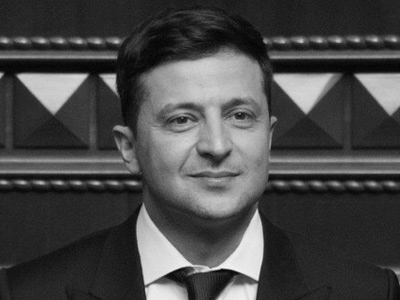
Ukrainian politician and former comedian and actor who has served as the sixth and current president of Ukraine since 2019. His administration faced an escalation of tensions with Russia in 2021, culminating in the launch of the ongoing full-scale Russian invasion in February 2022. His leadership during the crisis has won him widespread international praise, and he has been described as a symbol of the Ukrainian resistance.
Elon Musk (1971-)
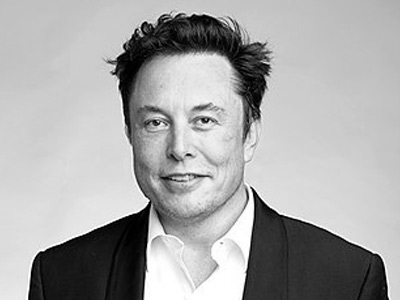
Elon Musk is an engineer, industrial designer, technology entrepreneur, and philanthropist. He is the founder, CEO and chief engineer/designer of SpaceX; co-founder, CEO and product architect of Tesla, Inc.; founder of The Boring Company; co-founder of Neuralink; and co-founder and initial co-chairman of OpenAI. View Figure »
Barack Obama (1961-)
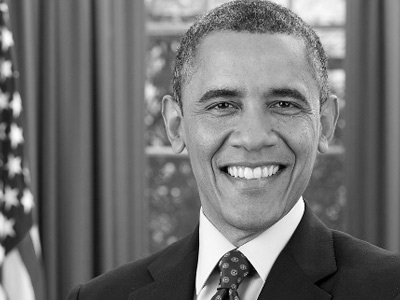
Barack Hussein Obama II is an American politician who served as the 44th president of the United States from 2009 to 2017. A member of the Democratic Party, he was the first African-American president of the United States. During Obama's terms as president, the United States' reputation abroad, as well as the American economy, significantly improved.
Bill Gates (1955-)
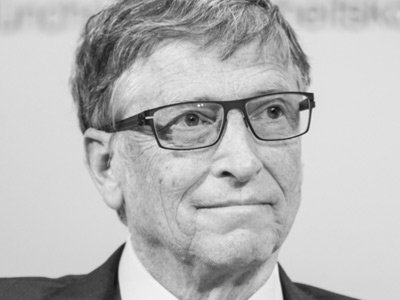
Bill Gates is an American business magnate, software developer, investor, author, and philanthropist. He is a co-founder of Microsoft, along with his late childhood friend Paul Allen. He was a major entrepreneur of the microcomputer revolution of the 1970s and 1980s. He has given sizable amounts of money to various charitable organizations and scientific research programs through the Bill and Melinda Gates Foundation.
Steve Jobs (1955-2011)
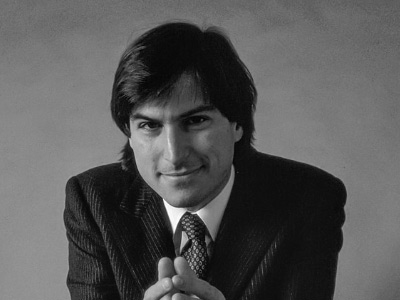
Steven Paul Jobs was an American entrepreneur, industrial designer, media proprietor, and investor. He was the co-founder, chairman, and CEO of Apple; the chairman and majority shareholder of Pixar; a member of The Walt Disney Company's board of directors following its acquisition of Pixar; and the founder, chairman, and CEO of NeXT. He is widely recognized as a pioneer of the personal computer revolution of the 1970s and 1980s, along with his fellow Apple co-founder Steve Wozniak.
Shinzo Abe (1954-2022)
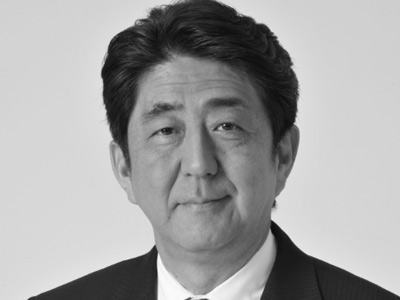
Shinzo Abe was a Japanese politician who served as Prime Minister of Japan and President of the Liberal Democratic Party from 2006 to 2007 and again from 2012 to 2020. He was the longest-serving prime minister in Japanese history. While delivering a campaign speech for a Liberal Democratic Party (LDP) candidate, he was shot from behind at close range by a man with a homemade firearm.
Steven Spielberg (1946-)
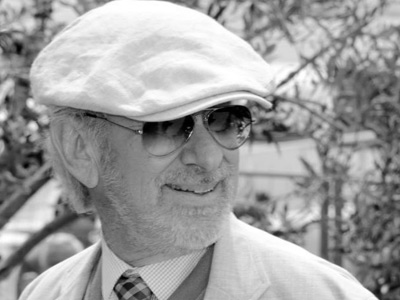
Steven Allan Spielberg is an American film director, writer and producer. A major figure of the New Hollywood era and pioneer of the modern blockbuster, he is the most commercially successful director of all time. He directed huge box office successes Close Encounters of the Third Kind (1977), E.T. the Extra-Terrestrial (1982) and the Indiana Jones original trilogy (1981-89).
George Walker Bush (1946-)
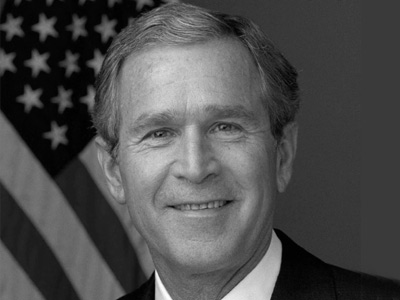
George Walker Bush is an American politician who served as the 43rd president of the United States from 2001 to 2009. A member of the Republican Party, he previously served as the 46th governor of Texas from 1995 to 2000. A decisive event reshaping his administration was the terrorist attacks on September 11, 2001. In its aftermath, Congress created the United States Department of Homeland Security and Bush declared a global war on terrorism.
Bruce Lee (1940-1973)
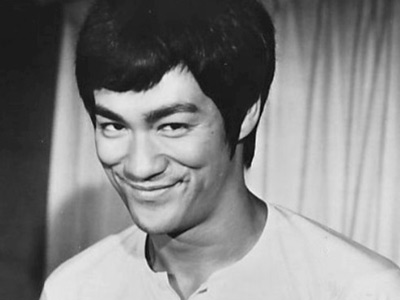
Bruce Lee was a Hong Kong and American actor, film director, martial artist, philosopher and founder of the martial art Jeet Kune Do. His Hong Kong and Hollywood-produced films elevated the traditional Hong Kong martial arts film to a new level of popularity and acclaim, sparking a surge of interest in Chinese martial arts in the West. View Historical Figure »
Elvis Presley (1935-1977)
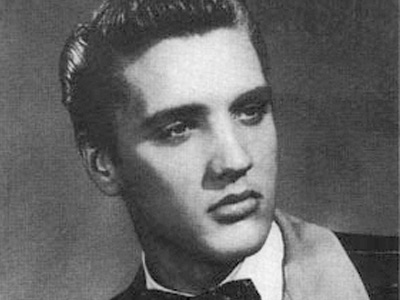
Was an American musician and actor. Regarded as one of the most significant cultural icons of the 20th century, he is often referred to as "the King of Rock and Roll", or simply, "the King". Presley is one of the most celebrated and influential musicians of the 20th century. View Historical Figure »
Akihito (1933-)
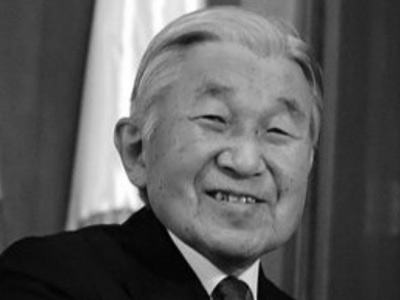
Akihito is a member of the Imperial House of Japan who reigned as the 125th emperor of Japan, according to the traditional order of succession, from 7 January 1989 until 30 April 2019, Heisei era. He succeeded to the Chrysanthemum Throne upon the death of his father, Emperor Showa (Hirohito). View Figure »
Mikhail Gorbachev (1931-2022)
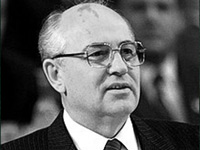
Mikhail Sergeyevich Gorbachev was a Soviet and Russian politician who served as the eighth and final leader of the Soviet Union from 1985 to the country's dissolution in 1991. Gorbachev's reforms were gradualist and maintained many of the macroeconomic aspects of the command economy including price controls, inconvertibility of the ruble, and the government monopoly over most means of production.
Martin Luther King Jr. (1929-1968)
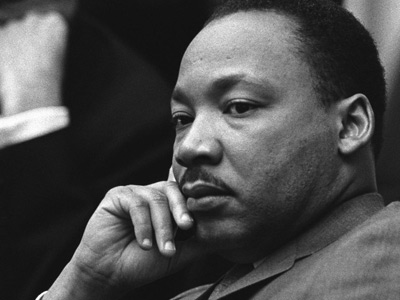
Martin Luther King Jr. was an American Baptist minister and activist, one of the most prominent leaders in the civil rights movement from 1955 until his assassination in 1968. An African American church leader and the son of early civil rights activist and minister Martin Luther King Sr., King advanced civil rights for people of color in the United States through nonviolence and civil disobedience.
Ernesto Che Guevara (1928-1967)
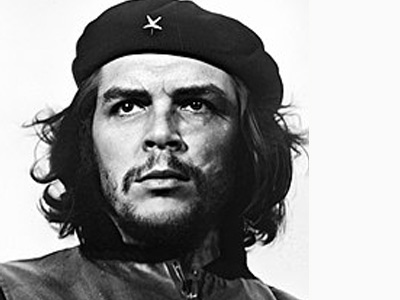
Ernesto "Che" Guevara was an Argentine Marxist revolutionary, physician, writer, guerrilla leader, diplomat, and military theorist. A major figure of the Cuban Revolution, his stylized visage has become a ubiquitous countercultural symbol of rebellion and global insignia in popular culture.
Fidel Castro (1926-2016)
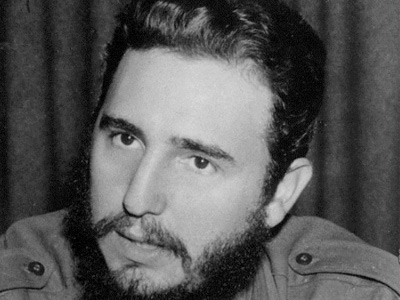
Fidel Alejandro Castro Ruz was a Cuban revolutionary and politician who was the leader of Cuba from 1959 to 2008, serving as the prime minister of Cuba from 1959 to 1976 and president from 1976 to 2008. Under his administration, Cuba became a one-party communist state; industry and business were nationalized, and state socialist reforms were implemented throughout society.
John Fitzgerald Kennedy (1917-1963)
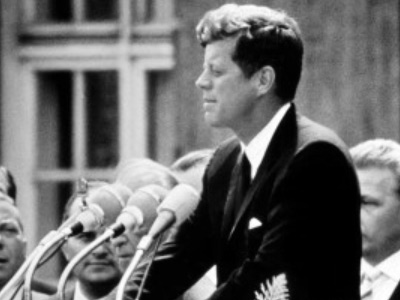
John Fitzgerald Kennedy was an American politician who served as the 35th president of the United States from January 1961 until his assassination in November 1963. Kennedy served at the height of the Cold War, and the majority of his work as president concerned relations with the Soviet Union and Cuba. View Historical Figure »
Richard Nixon (1913-1994)
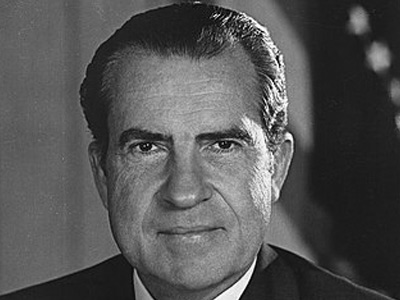
Richard Nixon was the 37th president of the United States, serving from 1969 until 1974. After five years in the White House that saw the conclusion to the U.S. involvement in the Vietnam War, détente with the USSR and China, and the establishment of the Environmental Protection Agency, he became the only president to resign from the office. View Historical Figure »
Ronald Reagan (1911-2004)
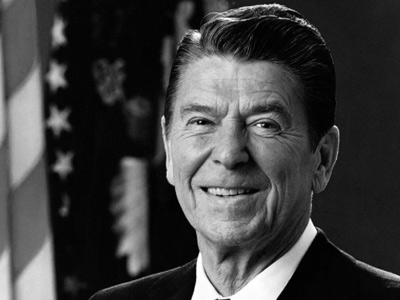
Ronald Reagan was an American statesman and actor who served as the 40th President of the United States from 1981 to 1989. Before his presidency, he was the 33rd Governor of California, from 1967 to 1975, after a career as a Hollywood actor and union leader. An icon among Republicans, he is viewed favorably in historian rankings of U.S. presidents, and his tenure constituted a realignment toward conservative policies in the U.S. View Historical Figure »
Charles de Gaulle (1890-1970)
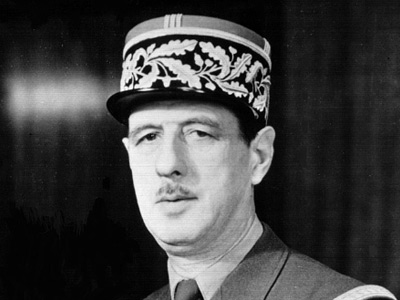
Charles de Gaulle was a French army officer and statesman who led Free France against Nazi Germany in World War II and chaired the Provisional Government of the French Republic from 1944 to 1946 in order to restore democracy in France. He rewrote the Constitution of France and founded the Fifth Republic after approval by referendum. He was elected President of France later that year, a position to which he was reelected in 1965 and held until his resignation in 1969.
Dwight David Eisenhower (1890-1969)
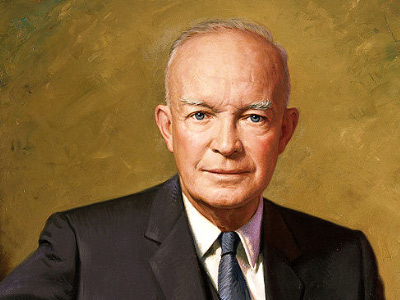
Dwight David "Ike" Eisenhower was an American military officer and statesman who served as the 34th president of the United States from 1953 to 1961. During World War II, he served as Supreme Commander of the Allied Expeditionary Force in Europe, and achieved the five-star rank of General of the Army. He planned and supervised the invasion of North Africa in Operation Torch in 1942–1943 and the invasion of Normandy (D-Day) from the Western Front in 1944–1945.
Adolf Hitler (1889-1945)
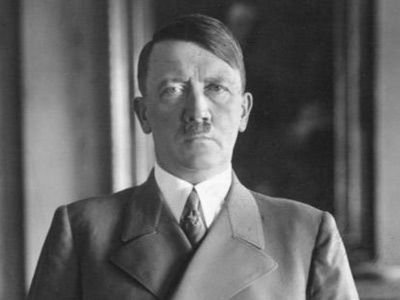
Adolf Hitler was a German politician who was the leader of the Nazi Party, Chancellor of Germany from 1933 to 1945 and Führer (Leader) of Nazi Germany from 1934 to 1945. As dictator, Hitler initiated World War II in Europe with the invasion of Poland in September 1939, and was central to the Holocaust. He frequently denounced international capitalism and communism as being part of a Jewish conspiracy. View Historical Figure »
Chiang Kai-shek (1887-1975)
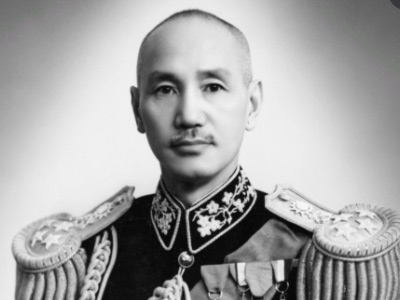
Chiang Kai-shek was a Chinese Nationalist politician, revolutionary and military leader, who served as the leader of the Republic of China from 1928 to his death in 1975 – until 1949 in mainland China and from then on in Taiwan. As the leader of the Republic of China in the Nanjing decade, Chiang sought to strike a difficult balance between modernizing China, while also devoting resources to defending the nation against the CCP, warlords, and the impending Japanese threat.
Franklin Delano Roosevelt (1882-1945)
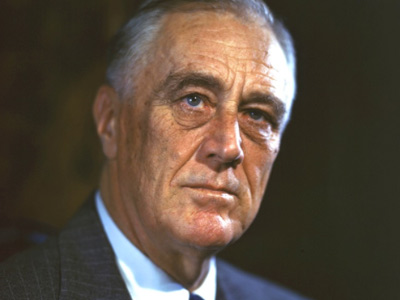
Franklin Delano Roosevelt was an American statesman and political leader who served as the 32nd President of the United States. His third and fourth terms were dominated by World War II, in which the United States aligned with the Allied Powers against the Axis Powers of Nazi Germany, Japan, and Italy. He is often rated by scholars as one of the three greatest U.S. Presidents, along with George Washington and Abraham Lincoln. View Historical Figure »
Pablo Ruiz Picasso (1881-1973)
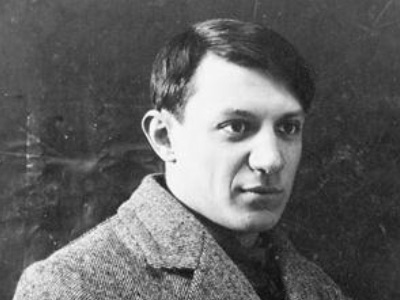
Pablo Ruiz Picasso was a Spanish painter, sculptor, printmaker, ceramicist and theatre designer who spent most of his adult life in France. Regarded as one of the most influential artists of the 20th century, he is known for co-founding the Cubist movement, the invention of constructed sculpture, the co-invention of collage, and for the wide variety of styles that he helped develop and explore.
Albert Einstein (1879–1955)
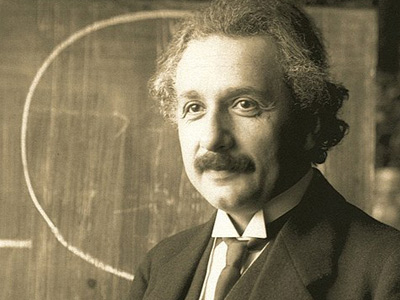
A German-born theoretical physicist. Einstein developed the theory of relativity, one of the two pillars of modern physics (alongside quantum mechanics). Einstein is best known by the general public for his mass–energy equivalence formula E = mc2 (which has been dubbed "the world's most famous equation"). View Historical Figure »
Joseph Stalin (1878-1953)
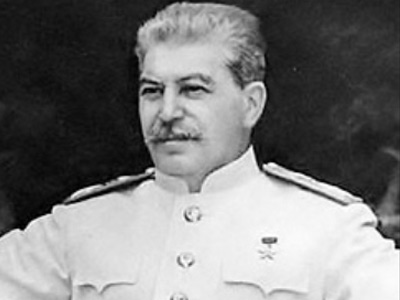
Joseph Stalin was a Georgian-born Soviet revolutionary and political leader. Governing the Soviet Union as its dictator from the mid-1920s until his death in 1953, he served as General Secretary of the Central Committee of the Communist Party of the Soviet Union from 1922 to 1952 and as Premier of the Soviet Union from 1941 to 1953. Ideologically a Marxist and a Leninist, Stalin helped to formalise these ideas as Marxism–Leninism while his own policies became known as Stalinism. View Historical Figure »
Winston Churchill (1874-1965)
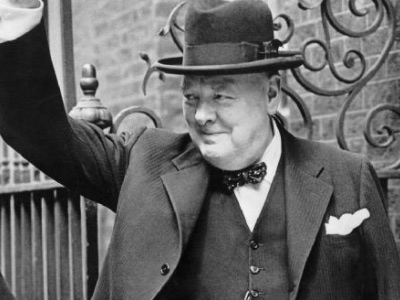
Winston Churchill was a British statesman, army officer, and writer. He served as Prime Minister of the United Kingdom from 1940 to 1945 and again from 1951 to 1955. His speeches and radio broadcasts helped inspire British resistance, especially during the difficult days of 1940–41 when the British Commonwealth and Empire stood almost alone in its active opposition to Adolf Hitler. He led Britain as Prime Minister until after the German surrender in 1945. View Historical Figure »
Howard Carter (1874-1939)
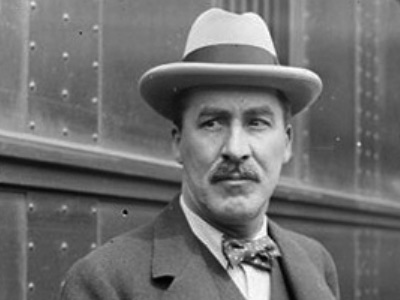
Howard Carter was a British archaeologist and Egyptologist who discovered the intact tomb of the 18th Dynasty Pharaoh Tutankhamun in November 1922, the best-preserved pharaonic tomb ever found in the Valley of the Kings. Carter's meticulous assessing and cataloguing of the thousands of objects in the tomb took nearly ten years, most being moved to the Egyptian Museum in Cairo. After the clearance of the tomb had been completed in 1932 Carter retired from excavation work.
Mohandas Karamchand Gandhi (1869-1948)
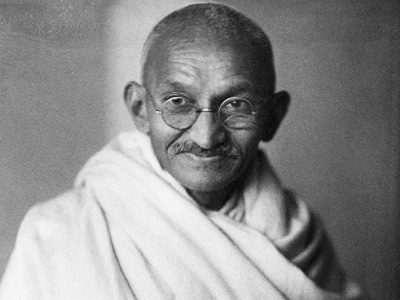
Mohandas Karamchand Gandhi was an Indian lawyer, anti-colonial nationalist, and political ethicist, who employed nonviolent resistance to lead the successful campaign for India's independence from British Rule, and in turn inspire movements for civil rights and freedom across the world. View Historical Figure »
Nicholas II (1868-1918)
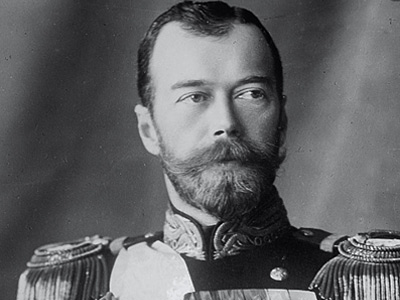
Nicholas II or Nikolai II Alexandrovich Romanov, known in the Russian Orthodox Church as Saint Nicholas the Passion-Bearer, was the last Emperor of Russia, King of Congress Poland and Grand Duke of Finland, ruling from 1 November 1894 until his abdication on 15 March 1917. On 1 March 1881, following the assassination of his grandfather, Tsar Alexander II, Nicholas became heir apparent upon his father's accession as Alexander III.
Henry Ford (1863-1947)
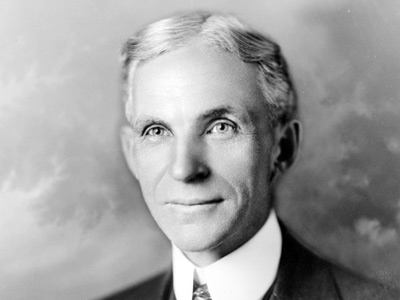
Henry Ford was an American industrialist and business magnate, founder of the Ford Motor Company and chief developer of the assembly line technique of mass production. By creating the first automobile that middle-class Americans could afford, he converted the automobile from an expensive curiosity into an accessible conveyance that would profoundly impact the landscape of the 20th century. View Historical Figure »
Theodore Roosevelt (1858-1919)
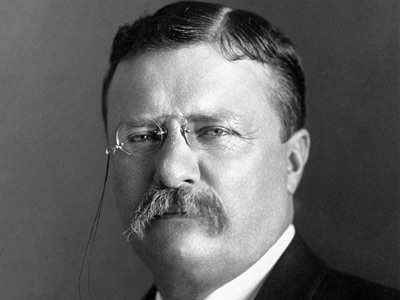
Theodore Roosevelt Jr. was an American politician, statesman, soldier, conservationist, naturalist, historian, and writer who served as the 26th president of the United States from 1901 to 1909. Assuming the presidency after McKinley's assassination, Roosevelt emerged as a leader of the Republican Party and became a driving force for anti-trust and Progressive policies. Polls of historians and political scientists rank him as one of the greatest presidents in American history.
Woodrow Wilson (1856-1924)
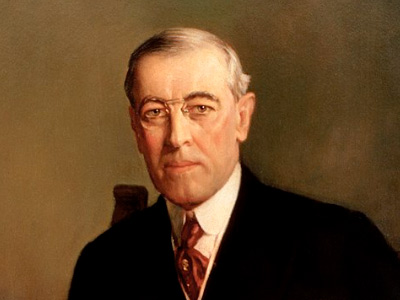
Thomas Woodrow Wilson was an American politician and academic who served as the 28th president of the United States from 1913 to 1921. As president, Wilson changed the nation's economic policies and led the United States into World War I in 1917. He was the leading architect of the League of Nations, and his progressive stance on foreign policy came to be known as Wilsonianism.
Nikola Tesla (1856-1943)
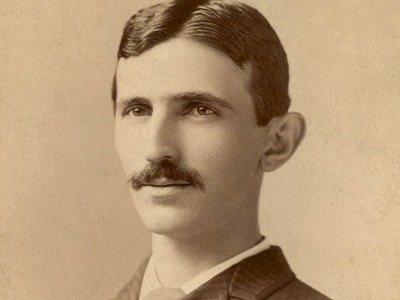
Nikola Tesla was a Serbian-American inventor, electrical engineer, mechanical engineer, physicist, and futurist who is best known for his contributions to the design of the modern alternating current (AC) electricity supply system. The nature of his earlier work and the pronouncements he made to the press later in life earned him the reputation of an archetypal "mad scientist" in American popular culture. View Historical Figure »
Vincent van Gogh (1853-1890)
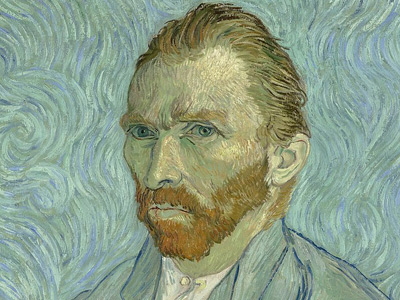
A Dutch Post-Impressionist painter who is among the most famous and influential figures in the history of Western art. In just over a decade he created about 2,100 artworks, including around 860 oil paintings, most of them in the last two years of his life. View Historical Figure »
Gojong of Korea 광무제 (1852-1919)
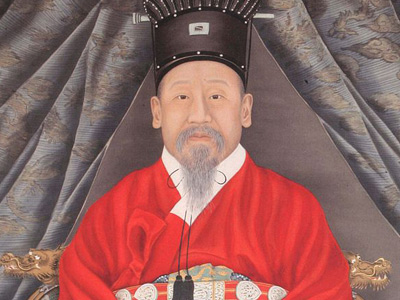
Gojong of Korea was the twenty-sixth king of the Joseon dynasty and the first Emperor of Korea. Gojong proclaimed the Korean Empire in 1897 to justify the country's ending of its traditional tributary subordination to China. He tried to promote the ultimately unsuccessful Gwangmu Reform. View Historical Figure »
Paul von Hindenburg (1847-1934)
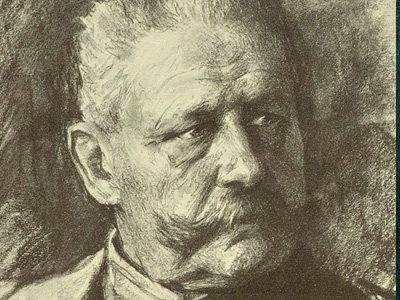
Paul von Hindenburg was a German field marshal and statesman who led the Imperial German Army during World War I and later became President of Germany from 1925 until his death in 1934. During his presidency, he played a key role in the Nazi seizure of power in January 1933 when, under pressure from advisers, he appointed Adolf Hitler as Chancellor of Germany. While personally opposed to Adolf Hitler and his Nazi Party, he nonetheless played a major role in the political instability that resulted in their rise to power.
Alexander Graham Bell (1847-1922)
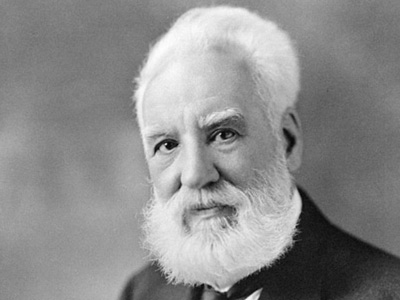
Alexander Graham Bell was a Scottish-born inventor, scientist and engineer who is credited with patenting the first practical telephone. He also co-founded the American Telephone and Telegraph Company in 1885. Many other inventions marked Bell's later life, including groundbreaking work in optical telecommunications, hydrofoils, and aeronautics.
Thomas Edison (1847-1931)
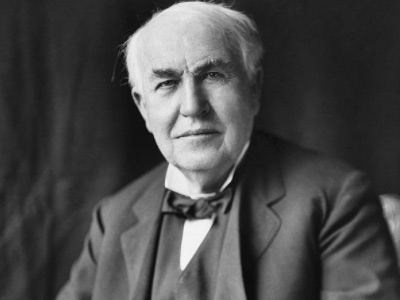
Thomas Edison was an American inventor and businessman, who has been described as America's greatest inventor. He developed many devices that greatly influenced life around the world, including the phonograph, the motion picture camera, and the long-lasting, practical electric light bulb. Edison was a prolific inventor, holding 1,093 US patents in his name, as well as many patents in the United Kingdom, France, and Germany. View Historical Figure »
William McKinley (1843-1901)
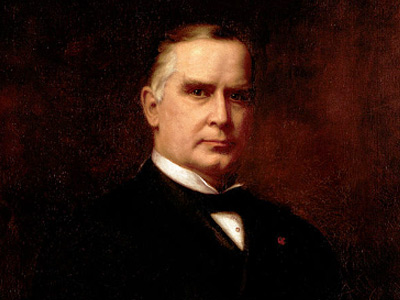
William McKinley was the 25th president of the United States, serving from 1897 until his assassination in 1901. He presided over victory in the Spanish–American War of 1898; gained control of Hawaii, Puerto Rico, the Philippines and Cuba; restored prosperity after a deep depression; rejected the inflationary monetary policy of free silver, keeping the nation on the gold standard; and raised protective tariffs to boost American industry and keep wages high.
Ernst Mach (1838-1916)
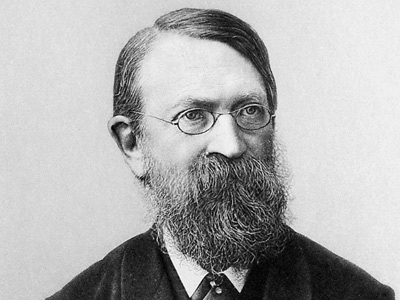
Ernst Waldfried Josef Wenzel Mach was a Moravian-born Austrian physicist and philosopher, who contributed to the physics of shock waves. The ratio of one's speed to that of sound is named the Mach number in his honour. As a philosopher of science, he was a major influence on logical positivism and American pragmatism. Through his criticism of Newton's theories of space and time, he foreshadowed Einstein's theory of relativity.
Gottlieb Daimler (1834-1900)
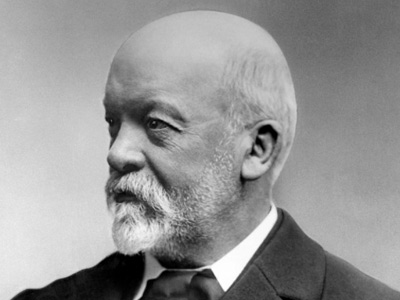
Gottlieb Daimler was an engineer, industrial designer and industrialist born in Schorndorf, in what is now Germany. He was a pioneer of internal-combustion engines and automobile development. He invented the high-speed liquid petroleum-fuelled engine. Daimler and his lifelong business partner Wilhelm Maybach were two inventors whose goal was to create small, high-speed engines to be mounted in any kind of locomotion device. View Historical Figure »
William Thomson, 1st Baron Kelvin (1824-1907)
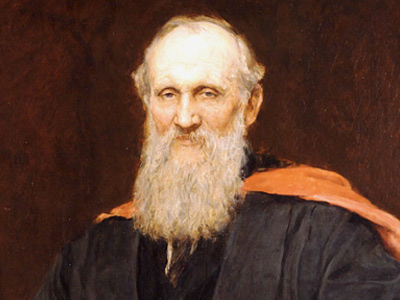
William Thomson, 1st Baron Kelvin was a British mathematician, mathematical physicist and engineer born in Belfast. Professor of Natural Philosophy at the University of Glasgow for 53 years, he did important work in the mathematical analysis of electricity and formulation of the first and second laws of thermodynamics, and did much to unify the emerging discipline of physics in its contemporary form. Absolute temperatures are stated in units of kelvin in his honour.
James Prescott Joule (1818-1889)
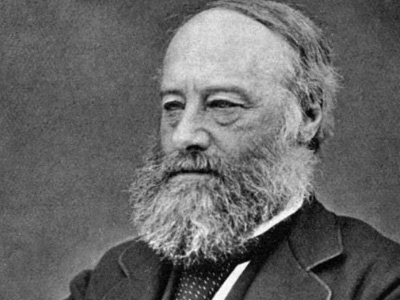
James Prescott Joule was an English physicist, mathematician and brewer, born in Lancashire. Joule studied the nature of heat, and discovered its relationship to mechanical work. This led to the law of conservation of energy, which in turn led to the development of the first law of thermodynamics. The SI derived unit of energy, the joule, is named after him. Joule also found the relationship between the current through a resistor and the heat dissipated, which is also called Joule's first law.
Napoleon II (1811-1832)
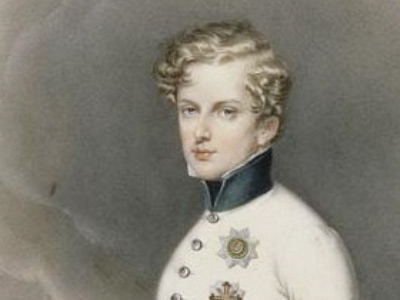
The son of Emperor Napoleon I and Marie Louise of Austria, he had been Prince Imperial of France and King of Rome since birth. When Napoleon I tried to abdicate on 4 April 1814, he said that his son would rule as emperor. However, the coalition victors refused to acknowledge his son as successor, and Napoleon I was forced to abdicate unconditionally some days later. He lived most of his life in Vienna and died of tuberculosis at the age of 21.
Charles Robert Darwin (1809-1882)
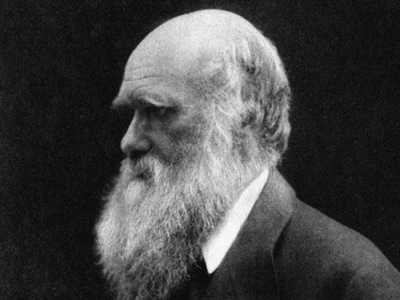
Charles Robert Darwin was an English naturalist, geologist and biologist, best known for his contributions to evolutionary biology. His proposition that all species of life have descended from a common ancestor is now widely accepted and considered a fundamental concept in science. He introduced his scientific theory that this branching pattern of evolution resulted from a process that he called natural selection, in which the struggle for existence has a similar effect to the artificial selection involved in selective breeding.
Abraham Lincoln (1809-1865)
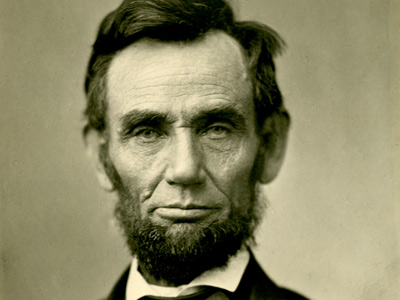
An American politician and lawyer who served as the 16th President of the United States from March 1861 until his assassination in April 1865. Lincoln led the United States through its Civil War—its bloodiest war and perhaps its greatest moral, constitutional, and political crisis. In doing so, he preserved the Union, paved the way to the abolition of slavery, strengthened the federal government, and modernized the economy. View Historical Figure »
Napoleon III (1808-1873)
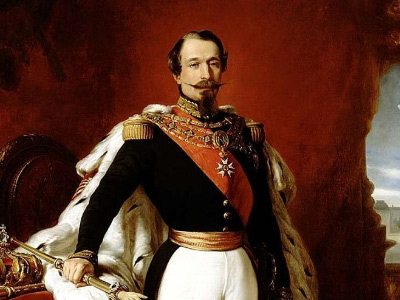
Napoleon III was the Emperor of the French from 1852-1870 and, as Louis-Napoléon Bonaparte, the President of France from 1848-1852. He was the only president of the French Second Republic and founder of the Second French Empire. The nephew and heir of Napoleon I, he was the 1st Head of State of France to hold the title of President. View Historical Figure »
Nicholas I (1796-1855)
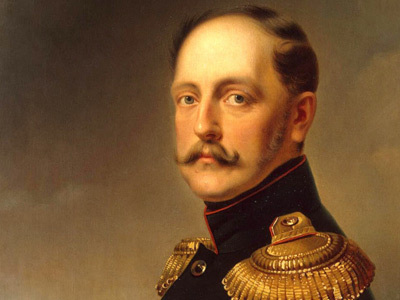
Nicholas I was Emperor of Russia, King of Poland and Grand Duke of Finland. Nicholas I was instrumental in helping to create an independent Greek state, and resumed the Russian conquest of the Caucasus by seizing Iğdır Province and the remainder of modern-day Armenia and Azerbaijan from Qajar Persia during the Russo-Persian War of 1826–1828.
Samuel Morse (1791-1872)
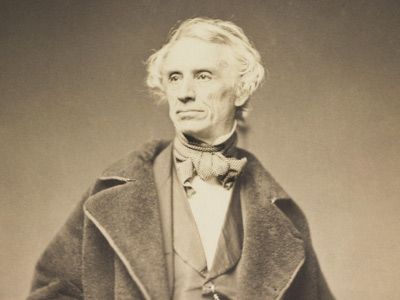
Samuel Finley Breese Morse was an American painter and inventor. After having established his reputation as a portrait painter, in his middle age Morse contributed to the invention of a single-wire telegraph system based on European telegraphs. He was a co-developer of the Morse code and helped to develop the commercial use of telegraphy. View Historical Figure »
Ferdinand VII of Spain (1784-1833)
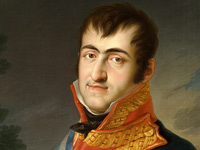
Ferdinand VII was a King of Spain during the early 19th century. He reigned briefly in 1808 and then again from 1813 to his death in 1833. Under his rule, Spain lost nearly all of its American possessions, and the country entered into a large-scale civil war upon his death. His political legacy has remained contested since his passing, with some historians regarding him as incompetent, despotic, and short-sighted.
Eugène Rose de Beauharnais (1781-1824)
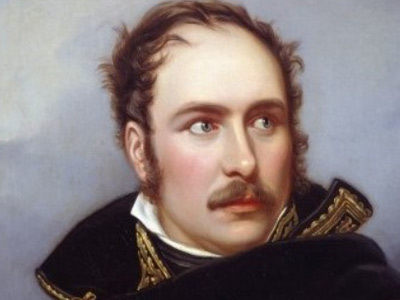
Eugène Rose de Beauharnais, Duke of Leuchtenberg was a French nobleman, statesman, and military commander who served during the French Revolutionary Wars and the Napoleonic Wars. Through the second marriage of his mother, Joséphine de Beauharnais, he was the stepson of Napoleon Bonaparte. He commanded the Army of Italy during the Napoleonic Wars and was Viceroy of the Kingdom of Italy under his stepfather. Historians consider him one of Napoleon's most able relatives.
Louis Napoléon Bonaparte (1778-1846)
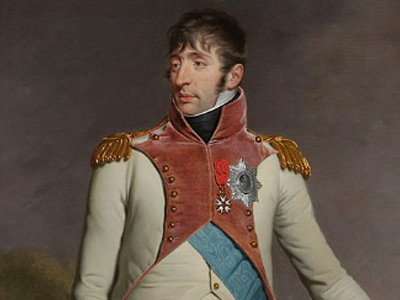
Louis Napoléon Bonaparte was a younger brother of Napoleon I, Emperor of the French. He was a monarch in his own right from 1806 to 1810, ruling over the Kingdom of Holland. Napoleon had intended for Holland to be little more than a puppet state, but Louis was determined to be as independent as possible, and in fact became quite popular amongst his new people. Growing tired of his brother's wilfulness, Napoleon annexed Holland into the French Empire in 1810, and Louis went into exile.
Alexander I (1777-1825)
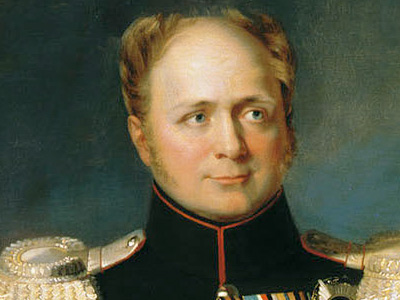
Alexander I was Emperor of Russia from 1801, the first King of Congress Poland from 1815, and the Grand Duke of Finland from 1809 to his death. As prince and during the early years of his reign, Alexander often used liberal rhetoric, but continued Russia's absolutist policies in practice. In the first years of his reign, he initiated some minor social reforms and (in 1803–04) major liberal educational reforms, such as building more universities.
Johann Carl Friedrich Gauss (1777-1855)
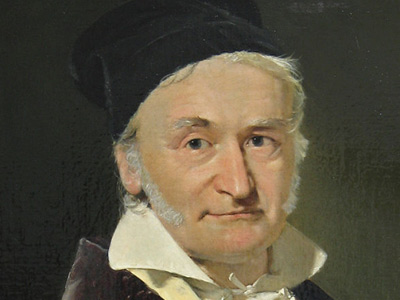
Johann Carl Friedrich Gauss was a German mathematician and physicist who made significant contributions to many fields in mathematics and science. Sometimes referred to as the Princeps mathematicorum (Latin for '"the foremost of mathematicians"') and "the greatest mathematician since antiquity", Gauss had an exceptional influence in many fields of mathematics and science, and is ranked among history's most influential mathematicians.
Louis Antoine of France (1775-1844)
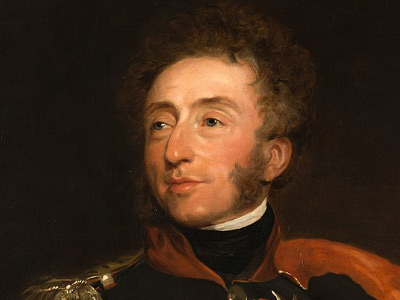
Louis Antoine of France, Duke of Angoulême was the elder son of Charles X of France and the last Dauphin of France from 1824 to 1830. He was disputedly King of France and Navarre for less than 20 minutes before he himself abdicated, due to his father's abdication during the July Revolution in 1830. He never reigned over the country, but after his father's death in 1836, he was the legitimist pretender as Louis XIX.
Louis Philippe I (1773-1850)
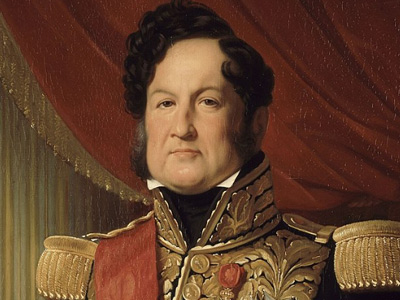
Louis Philippe I was King of the French from 1830 to 1848, and the penultimate monarch of France. He distinguished himself commanding troops during the Revolutionary Wars and was promoted to lieutenant general by the age of 19, but he broke with the Republic over its decision to execute King Louis XVI. He fled to Switzerland in 1793 after being connected with a plot to restore France's monarchy.
William Henry Harrison (1773-1841)
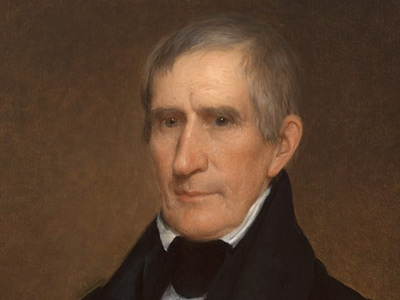
William Henry Harrison was an American military officer and politician who served as the ninth president of the United States. Harrison died just 31 days after his inauguration in 1841, and had the shortest presidency in United States history. Harrison was the last president born as a British subject in the Thirteen Colonies and was the paternal grandfather of Benjamin Harrison, the 23rd president of the United States.
Ludwig van Beethoven (1770-1827)
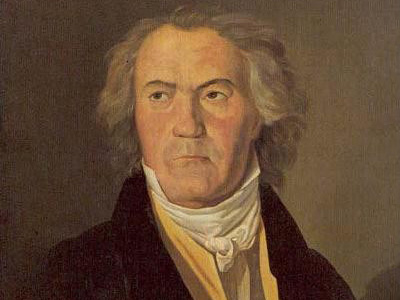
Ludwig van Beethoven was a German composer and pianist. A crucial figure in the transition between the Classical and Romantic eras in Western art music, he remains one of the most famous and influential of all composers. His best-known compositions include 9 symphonies, 5 piano concertos, 1 violin concerto, 32 piano sonatas, 16 string quartets, his great Mass the Missa solemnis, and one opera, Fidelio. View Historical Figure »
Napoleon Bonaparte (1769-1821)
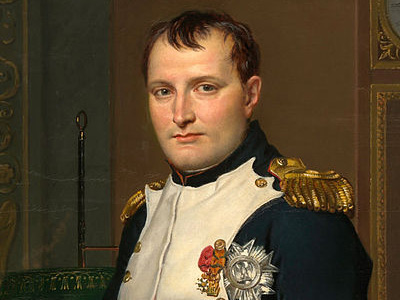
Napoleon was a French military and political leader who rose to prominence during the French Revolution and led several successful campaigns during the French Revolutionary War. One of the greatest commanders in history, his wars and campaigns are studied at military schools worldwide. Napoleon's political and cultural legacy has ensured his status as one of the most celebrated and controversial leaders in human history. View Historical Figure »
Thomas Masterman Hardy (1769-1839)
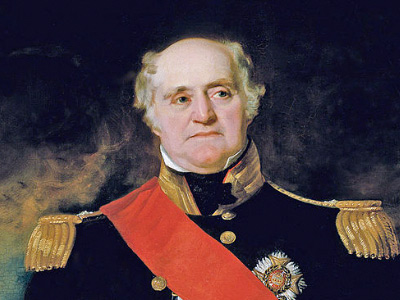
Vice-Admiral Sir Thomas Masterman Hardy, 1st Baronet, GCB was a Royal Navy officer. He took part in the Battle of Cape St. Vincent in February 1797, the Battle of the Nile in August 1798 and the Battle of Copenhagen in April 1801 during the French Revolutionary Wars. He served as flag captain to Admiral Lord Nelson, and commanded HMS Victory at the Battle of Trafalgar in October 1805 during the Napoleonic Wars.
Francis II (1768-1835)
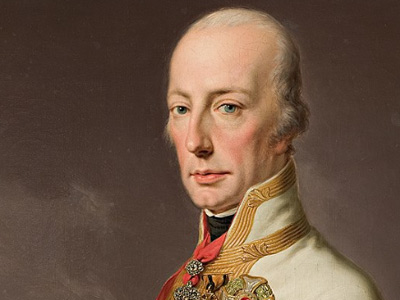
Francis II was the last Holy Roman Emperor (from 1792 to 1806) and, as Francis I, the first Emperor of Austria, from 1804 to 1835. He assumed the title of Emperor of Austria in response to the coronation of Napoleon as Emperor of the French. Soon after Napoleon created the Confederation of the Rhine, Francis abdicated as Holy Roman Emperor. He was King of Hungary, Croatia and Bohemia. He also served as the first president of the German Confederation following its establishment in 1815.
Joseph-Napoléon Bonaparte (1768-1844)
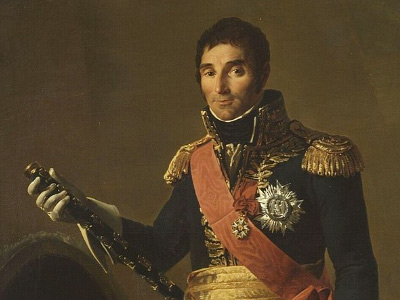
Joseph-Napoléon Bonaparte was a French statesman, lawyer, diplomat and older brother of Napoleon Bonaparte. During the Napoleonic Wars, the latter made him King of Naples (1806–1808), and then King of Spain (1808–1813). After the fall of Napoleon, Joseph styled himself Comte de Survilliers and emigrated to the United States, where he settled near Bordentown, New Jersey, on an estate overlooking the Delaware River not far from Philadelphia.
Joachim Murat (1767-1815)
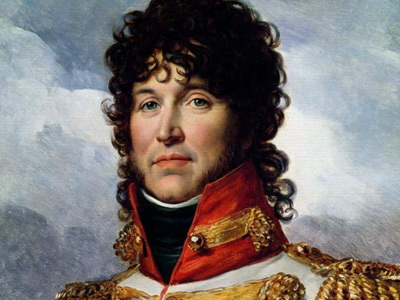
Joachim Murat was a French military commander and statesman who served during the French Revolutionary Wars and Napoleonic Wars. Under the French Empire he received the military titles of Marshal of the Empire and Admiral of France; he was also the 1st Prince Murat, Grand Duke of Berg from 1806 to 1808 and King of Naples as Joachim-Napoleon from 1808 to 1815. He was the brother-in-law of Napoleon Bonaparte.
John Dalton (1766-1844)
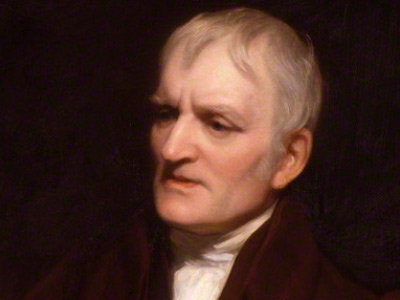
John Dalton was an English chemist, physicist and meteorologist. He is best known for introducing the atomic theory into chemistry, and for his research into colour blindness, which he had. Colour blindness is known as Daltonism in several languages, being named after him. In honour of Dalton's work, many chemists and biochemists use the unit of mass dalton (symbol Da), also known as the unified atomic mass unit, equal to 1/12 the mass of a neutral atom of carbon-12.
Józef Antoni Poniatowski (1763-1813)
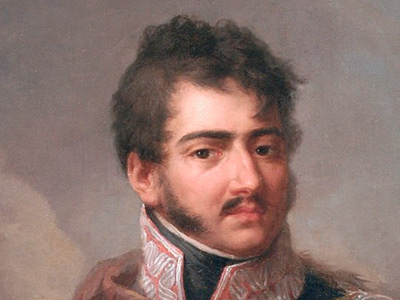
Prince Józef Antoni Poniatowski was a Polish general, minister of war and army chief, who became a Marshal of the French Empire during the Napoleonic Wars. A staunch ally and supporter of Emperor Napoleon I of France, Poniatowski voluntarily took part in the French invasion of Russia of 1812. Injuries received during the fighting for Moscow eventually forced his return to Warsaw, where he worked on the reconstruction of the Polish forces intended to fight in Germany.
Lord Hugh Seymour (1759-1801)
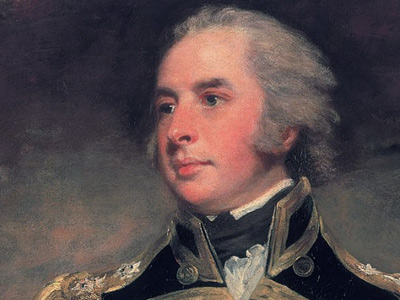
Vice-Admiral Lord Hugh Seymour was a senior British Royal Navy officer of the late 18th century who was the fifth son of Francis Seymour-Conway, 1st Marquess of Hertford, and became known for being both a prominent society figure and a highly competent naval officer. He served during the American Revolutionary and French Revolutionary Wars and later in his career performed a period of shore duty on the Admiralty board.
James Monroe (1758-1831)
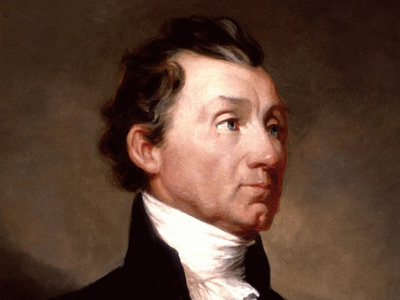
James Monroe was an American statesman, lawyer, diplomat and Founding Father who served as the fifth president of the United States from 1817 to 1825. He is perhaps best known for issuing the Monroe Doctrine, a policy of opposing European colonialism in the Americas while effectively asserting U.S. dominance, empire, and hegemony in the hemisphere. He also served as governor of Virginia, a member of the United States Senate, U.S. ambassador to France and Britain, the seventh Secretary of State, and the eighth Secretary of War.
Richard Goodwin Keats (1757-1834)
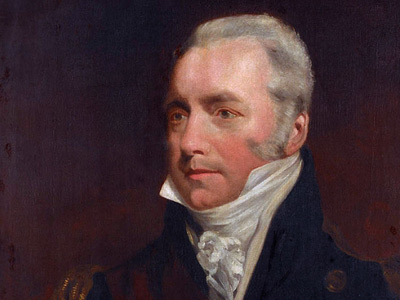
Admiral Sir Richard Goodwin Keats was a British naval officer who fought throughout the American Revolution, French Revolutionary War and Napoleonic War. He retired in 1812 due to ill health and was made Commodore-Governor of Newfoundland from 1813 to 1816. Keats is remembered as a capable and well respected officer. His actions at the Battle of Algeciras Bay became legendary.
Wolfgang Amadeus Mozart (1756-1791)
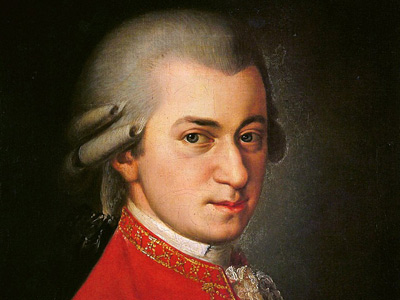
Wolfgang Amadeus Mozart was a prolific and influential composer of the Classical era. He composed more than 600 works, many acknowledged as pinnacles of symphonic, concertante, chamber, operatic, and choral music. He is among the most enduringly popular of classical composers, and his influence is profound on subsequent Western art music. View Historical Figure »
Marie Antoinette (1755-1793)
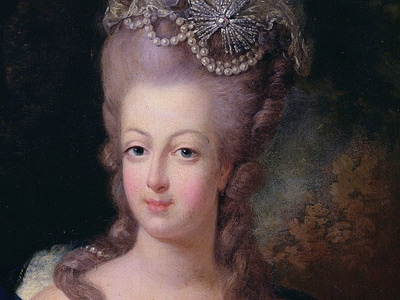
Marie Antoinette was the last Queen of France before the French Revolution. For many revolutionary figures, she was the symbol of what was wrong with the old regime in France. The onus of having caused the financial difficulties of the nation was placed on her shoulders by the revolutionary tribunal, and under the new republican ideas of what it meant to be a member of a nation, her Austrian descent and continued correspondence with the competing nation made her a traitor.
James Madison Jr. (1751-1836)
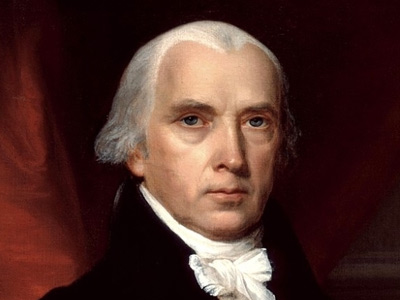
James Madison Jr. was an American statesman, diplomat, and Founding Father. He served as the fourth president of the United States from 1809 to 1817. Madison is hailed as the "Father of the Constitution" for his pivotal role in drafting and promoting the Constitution of the United States and the Bill of Rights. Madison is considered one of the most important Founding Fathers of the United States, and historians have generally ranked him as an above-average president.
Alessandro Volta (1745-1827)
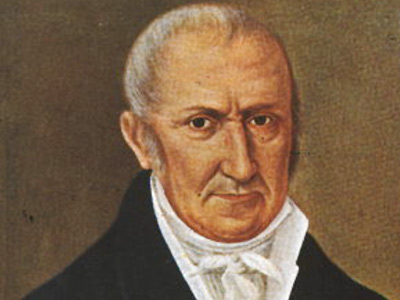
Alessandro Giuseppe Antonio Anastasio Volta was an Italian physicist, chemist and lay Catholic who was a pioneer of electricity and power who is credited as the inventor of the electric battery and the discoverer of methane. With this invention Volta proved that electricity could be generated chemically and debunked the prevalent theory that electricity was generated solely by living beings.
Thomas Jefferson (1743-1826)
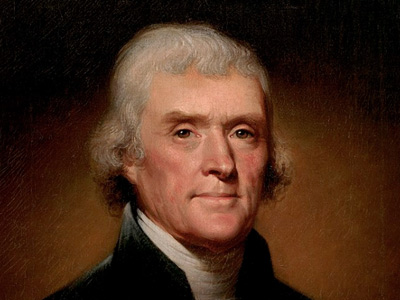
Thomas Jefferson was an American statesman, diplomat, lawyer, architect, philosopher, and Founding Father who served as the third president of the United States from 1801 to 1809. The principal author of the Declaration of Independence, Jefferson was a proponent of democracy, republicanism, and individual rights, motivating American colonists to break from the Kingdom of Great Britain and form a new nation.
Joseph II (1741-1790)
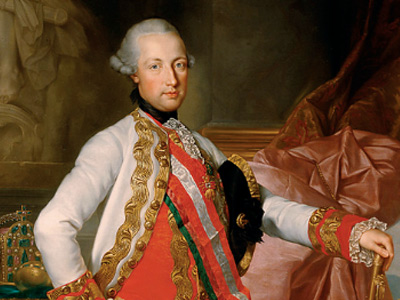
Joseph II was Holy Roman Emperor from August 1765 and sole ruler of the Habsburg lands from November 29, 1780 until his death. Joseph was a proponent of enlightened absolutism; however, his commitment to secularizing, liberalizing and modernizing reforms resulted in significant opposition, which resulted in failure to fully implement his programs. Meanwhile, despite making some territorial gains, his reckless foreign policy badly isolated Austria.
James Watt (1736-1819)
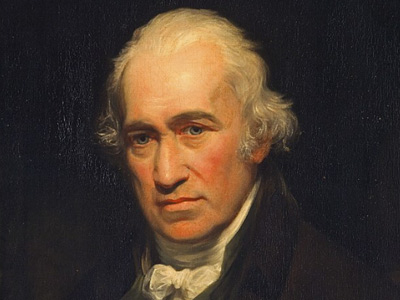
James Watt was a Scottish inventor, mechanical engineer, and chemist who improved on Thomas Newcomen's 1712 Newcomen steam engine with his Watt steam engine in 1776, which was fundamental to the changes brought by the Industrial Revolution in both his native Great Britain and the rest of the world. He realised that contemporary engine designs wasted a great deal of energy by repeatedly cooling and reheating the cylinder.
John Adams (1735-1826)
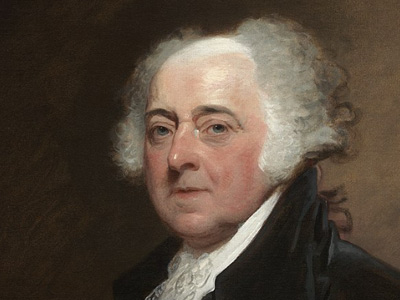
John Adams was an American statesman, attorney, diplomat, writer, and Founding Father who served as the second president of the United States from 1797 to 1801. Before his presidency, he was a leader of the American Revolution that achieved independence from Great Britain and during the war, served as a diplomat in Europe. He was twice elected vice president, serving from 1789 to 1797 in a prestigious role with little power.
George Washington (1732-1799)
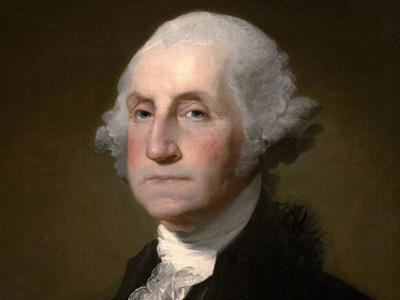
George Washington was an American politician and soldier who served as the first President of the United States from 1789 to 1797 and was one of the Founding Fathers of the United States. He served as Commander-in-Chief of the Continental Army during the American Revolutionary War, and later presided over the 1787 convention that drafted the United States Constitution. View Historical Figure »
Catherine the Great (1729-1796)
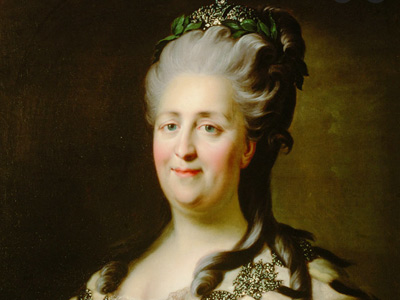
Catherine II (born May 2, 1729), most commonly known as Catherine the Great, was the last Empress of Russia (9 July 1762 – 17 November 1796) and the longest-ruling. She came to power following the overthrow of her husband and second cousin, Peter III of Russia. Catherine II died on November 17, 1796 in the Winter Palace, Saint Petersburg, Russia.
James Cook (1728-1779)
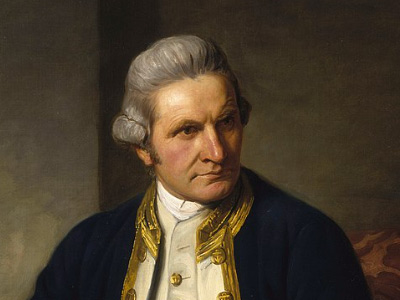
James Cook FRS was a British explorer, navigator, cartographer, and captain in the British Royal Navy, famous for his three voyages between 1768 and 1779 in the Pacific Ocean and to New Zealand and Australia in particular. He made detailed maps of Newfoundland prior to making three voyages to the Pacific, during which he achieved the first recorded European contact with the eastern coastline of Australia and the Hawaiian Islands, and the first recorded circumnavigation of New Zealand.
James Wolfe (1727-1759)
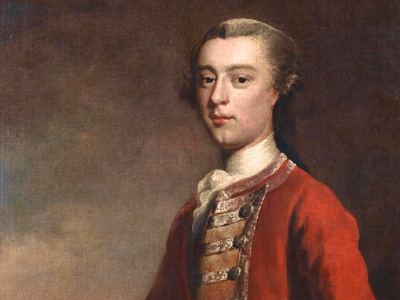
James Wolfe was a British Army Officer, known for his training reforms but remembered chiefly for his victory over the French at the Battle of the Plains of Abraham in Quebec in 1759. Wolfe's part in the taking of Quebec in 1759 earned him posthumous fame, and he became an icon of Britain's victory in the Seven Years War and subsequent territorial expansion. View Historical Figure »
Jeffery Amherst (1717-1797)
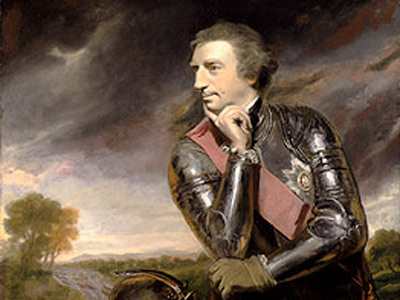
Jeffery Amherst served as an officer in the British Army and as Commander-in-Chief of the Forces. Amherst is best known as the architect of Britain's successful campaign to conquer the territory of New France during the Seven Years' War. Under his command, British forces captured the cities of Louisbourg, Quebec City and Montreal, as well as several major fortresses. View Historical Figure »
Charles III of Spain (1716-1788)
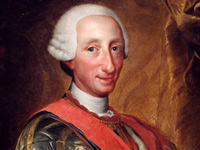
Charles III was King of Spain (1759–1788). A proponent of enlightened absolutism and regalism, he succeeded to the Spanish throne on 10 August 1759, upon the death of his childless half-brother Ferdinand VI. As King of Spain, Charles III made far-reaching reforms to increase the flow of funds to the crown and defend against foreign incursions on the empire. He facilitated trade and commerce, modernized agriculture and land tenure, and promoted science and university research.
Frederick the Great (1712-1786)
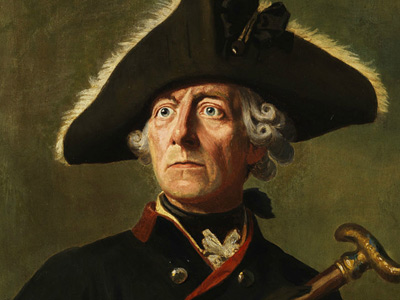
Frederick the Great was King of Prussia from 1740 until 1786, the longest reign of any Hohenzollern king. His most significant accomplishments during his reign included his military victories, his reorganization of Prussian armies, his patronage of the arts and the Enlightenment in Prussia, and his final success against great odds in the Seven Years' War. View Historical Figure »
Louis XV of France (1710-1774)
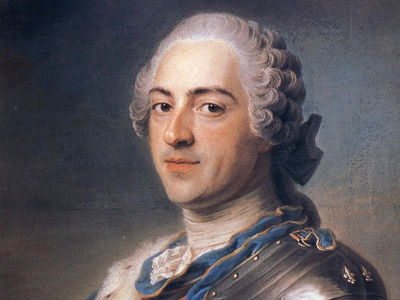
Louis XV of France known as Louis the Beloved, was a monarch of the House of Bourbon who ruled as King of France from 1 September 1715 until his death in 1774. His reign of more than 58 years was the second-longest in the history of France, exceeded only by his predecessor and great-grandfather, Louis XIV. View Historical Figure »
Benjamin Franklin (1706-1790)
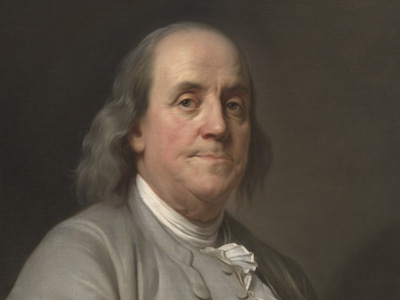
Benjamin Franklin was one of the Founding Fathers of the United States. As a scientist, he was a major figure in the American Enlightenment and the history of physics for his discoveries and theories regarding electricity. As an inventor, he is known for the lightning rod, bifocals, and the Franklin stove, among other inventions. View Historical Figure »
Anders Celsius (1701-1744)
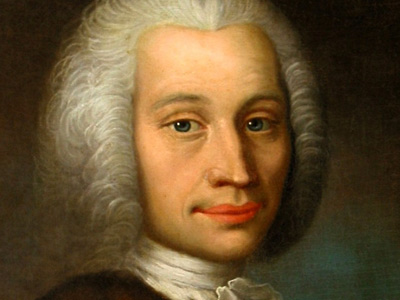
Anders Celsius was a Swedish astronomer, physicist and mathematician. He was professor of astronomy at Uppsala University from 1730 to 1744, but traveled from 1732 to 1735 visiting notable observatories in Germany, Italy and France. He founded the Uppsala Astronomical Observatory in 1741, and in 1742 proposed the Centigrade temperature scale which was later renamed Celsius in his honour.
Johann Sebastian Bach (1685-1750)
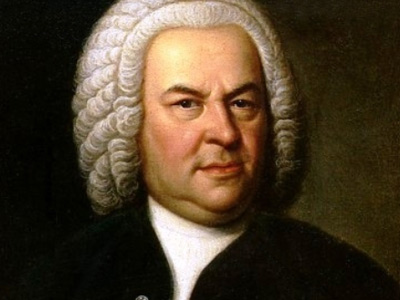
Johann Sebastian Bach was a German composer and musician of the Baroque period. He is known for instrumental compositions such as the Brandenburg Concertos and the Goldberg Variations, and vocal music such as the St Matthew Passion and the Mass in B minor. Since the 19th-century Bach Revival he has been generally regarded as one of the greatest composers of all time. View Historical Figure »
Philip V of Spain (1683-1746)
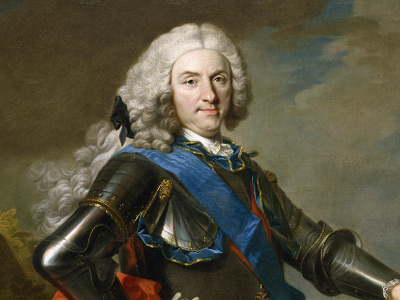
Philip V was King of Spain from 1 Nov 1700 to 14 Jan 1724, and again from 6 Sept 1724 to his death in 1746. His total reign of 45 years is the longest in the history of the Spanish monarchy. Philip instigated many important reforms in Spain, most especially the centralization of power of the monarchy and the suppression of regional privileges and restructuring of the administration of the Spanish Empire on the Iberian peninsula and its overseas regions.
Augustus II (1670-1733)
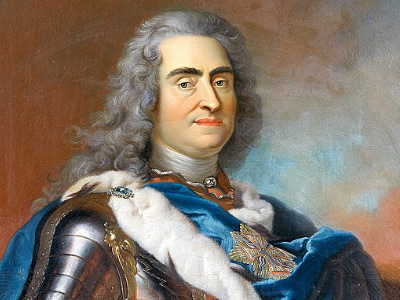
Augustus II, most commonly known as Augustus the Strong, was Elector of Saxony from 1694 as well as King of Poland and Grand Duke of Lithuania in the years 1697–1706 and from 1709 until his death in 1733. He belonged to the Albertine line of the House of Wettin. His reigns brought Poland some troubled times. He led the Polish–Lithuanian Commonwealth in the Great Northern War, which allowed the Russian Empire to strengthen its influence in Europe, especially within Poland.
Isaac Newton (1642-1726)
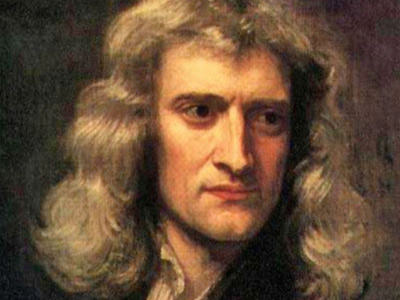
Sir Isaac Newton was an English mathematician, astronomer, theologian, author and physicist who is widely recognised as one of the most influential scientists of all time, and a key figure in the scientific revolution. Newton's Principia formulated the laws of motion and universal gravitation that dominated scientists' view of the physical universe for the next three centuries. View Historical Figure »
Louis XIV (1638-1715)
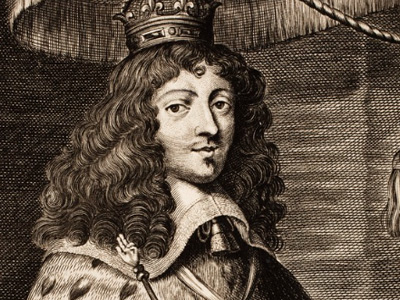
Louis XIV, also known as Louis the Great or the Sun King, was King of France from 14 May 1643 until his death in 1715. His reign of 72 years and 110 days is the longest recorded of any monarch of a sovereign country in history. During Louis's long reign, France emerged as the leading European power and regularly asserted its military strength.
Blaise Pascal (1623-1662)
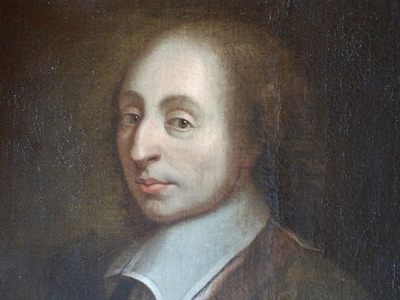
Blaise Pascal was a French mathematician, physicist, inventor, philosopher, writer, and Catholic theologian. He was a child prodigy who was educated by his father, a tax collector in Rouen. In 1642, while still a teenager, he started some pioneering work on calculating machines (called Pascal's calculators and later Pascalines), establishing him as one of the first two inventors of the mechanical calculator.
Frederick William (1620-1688)
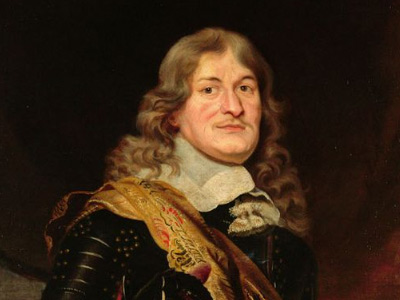
Frederick William was Elector of Brandenburg and Duke of Prussia, thus ruler of Brandenburg-Prussia, from 1640 until his death in 1688. He saw the importance of trade and promoted it vigorously. His shrewd domestic reforms gave Prussia a strong position in the post-Westphalian political order of north-central Europe, setting Prussia up for elevation from duchy to kingdom, achieved under his son and successor.
Evangelista Torricelli (1608-1647)
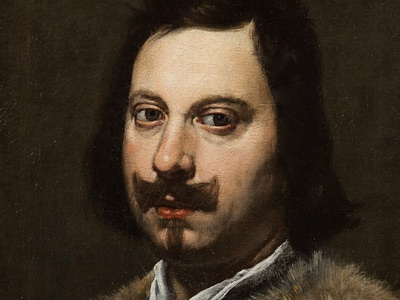
Evangelista Torricelli was an Italian physicist and mathematician, and a student of Galileo. He is best known for his invention of the barometer, but is also known for his advances in optics and work on the method of indivisibles. The Torr is also named after him. The torr is a unit of pressure based on an absolute scale, defined as exactly 1/760 of a standard atmosphere. Thus one torr is exactly 101325/760 pascals (≈ 133.32 Pa).
Rembrandt (1606-1669)
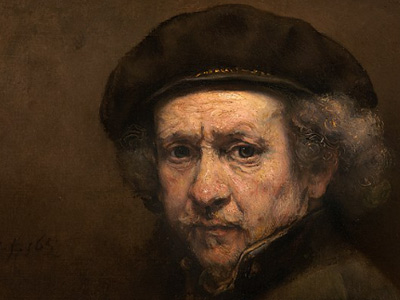
Rembrandt was a Dutch Golden Age painter, printmaker and draughtsman. An innovative and prolific master in three media, he is generally considered one of the greatest visual artists in the history of art and the most important in Dutch art history. It is estimated Rembrandt produced a total of about three hundred paintings, three hundred etchings and two thousand drawings. View Historical Figure »
Louis XIII (1601-1643)
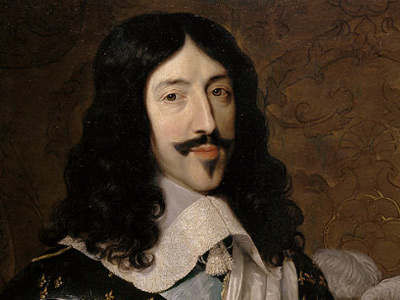
Louis XIII was King of France from 1610 until his death in 1643 and King of Navarre from 1610 to 1620, when the crown of Navarre was merged with the French crown. Shortly before his ninth birthday, Louis became king of France and Navarre after his father Henry IV was assassinated. His reign was also marked by the struggles against the Huguenots and Habsburg Spain.
Miyamoto Musashi 宮本 武蔵 (1584-1645)
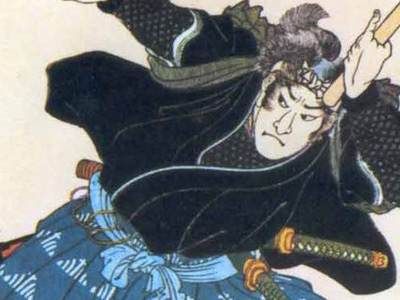
Miyamoto Musashi was an expert Japanese swordsman and rōnin. Musashi, as he was often simply known, became renowned through stories of his excellent, and unique double bladed swordsmanship and undefeated record in his 60 duels. In his final years he authored The Book of Five Rings (五輪の書 Go Rin No Sho), a book on strategy, tactics, and philosophy that is still studied today. View Historical Figure »
William Shakespeare (1564-1616)
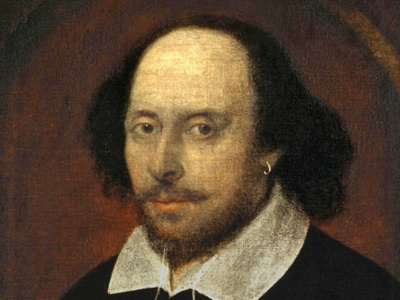
William Shakespeare was an English poet, playwright, and actor, widely regarded as the greatest writer in the English language and the world's pre-eminent dramatist. He is often called England's national poet, and the "Bard of Avon". His extant works, including collaborations, consist of approximately 38 plays, 154 sonnets, two long narrative poems, and a few other verses, some of uncertain authorship. View Historical Figure »
Galileo Galilei (1564-1642)
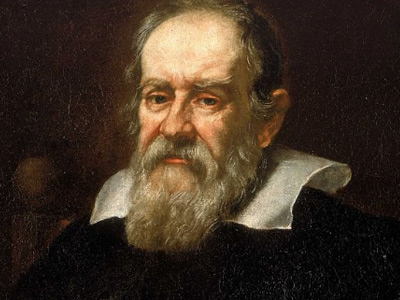
Galileo is a central figure in the transition from natural philosophy to modern science and in the transformation of the scientific Renaissance into a scientific revolution. Galileo has been called the "father of observational astronomy", the "father of modern physics", the "father of the scientific method", and even the "father of science". View Historical Figure »
Henry IV (1553-1610)
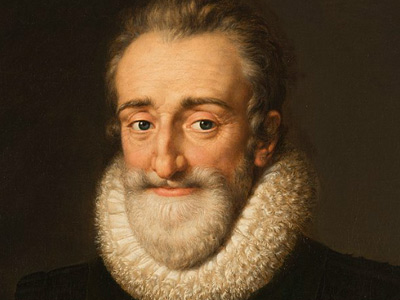
Henry IV, also known by the epithets Good King Henry or Henry the Great, was King of Navarre from 1572 and King of France from 1589 to 1610. He was the first monarch of France from the House of Bourbon, a cadet branch of the Capetian dynasty. He was assassinated in 1610 by François Ravaillac, a Catholic zealot, and was succeeded by his son Louis XIII.
Rudolf II (1552-1612)
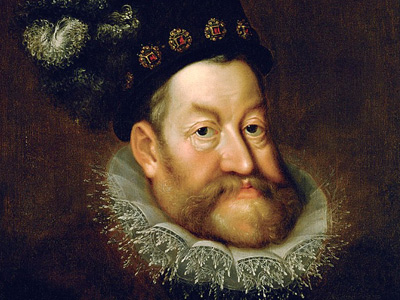
Rudolf II was Holy Roman Emperor (1576–1612), King of Hungary and Croatia, King of Bohemia and Archduke of Austria. Rudolf's legacy has traditionally been viewed in three ways: an ineffectual ruler whose mistakes led directly to the Thirty Years' War; a great and influential patron of Northern Mannerist art; and an intellectual devotee of occult arts and learning which helped seed what would be called the Scientific Revolution.
Henry III (1551-1589)
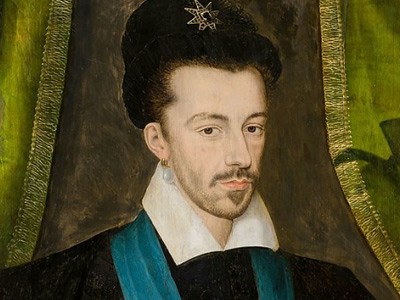
Henry III was King of France from 1574 until his assassination in 1589, as well as King of Poland and Grand Duke of Lithuania from 1573 to 1575. France was at the time plagued by the Wars of Religion, and Henry's authority was undermined by violent political factions funded by foreign powers. Henry III was himself a politique, arguing that a strong and religiously tolerant monarchy would save France from collapse.
John Napier (1550-1617)
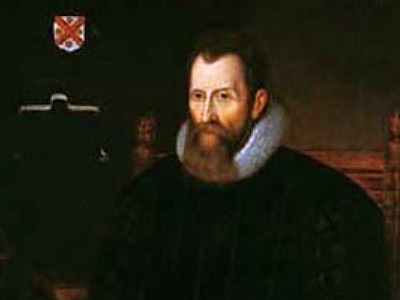
John Napier of Merchiston nicknamed Marvellous Merchiston, was a Scottish landowner known as a mathematician, physicist, and astronomer. John Napier is best known as the discoverer of logarithms. He also invented the so-called "Napier's bones" and made common the use of the decimal point in arithmetic and mathematics.
Yi Sun-Shin 이순신 (1545-1598)
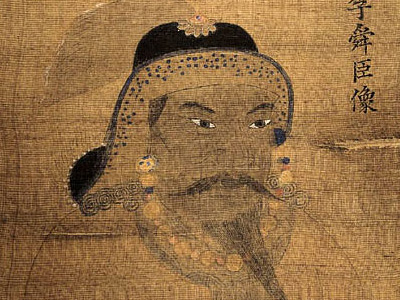
Was a Korean naval commander, famed for his victories against the Japanese navy during the Imjin war in the Joseon Dynasty, and is well-respected for his exemplary conduct on and off the battlefield not only by Koreans, but by Japanese admirals as well. View Historical Figure »
Tokugawa Ieyasu 徳川 家康 (1543-1616)
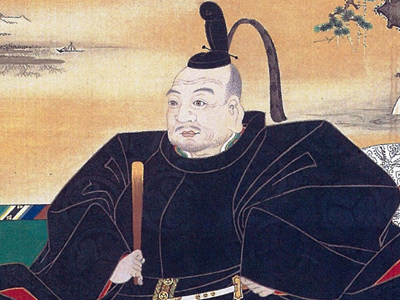
Tokugawa Ieyasu was the founder and first shogun of the Tokugawa shogunate of Japan, which effectively ruled Japan from the Battle of Sekigahara in 1600 until the Meiji Restoration in 1868. He was one of the three unifiers of Japan, along with his former lord Nobunaga and Toyotomi Hideyoshi. View Historical Figure »
Hattori Hanzō 服部 半蔵 (1542-1596)
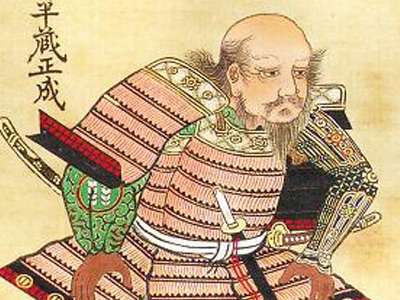
Also known as Hattori Masanari or Hattori Masashige (服部 正成), was a famous samurai of the Sengoku era, credited with saving the life of Tokugawa Ieyasu and then helping him to become the ruler of united Japan. Today, he is often a subject of varied portrayal in modern popular culture. View Historical Figure »
Toyotomi Hideyoshi 豊臣 秀吉 (1537-1598)
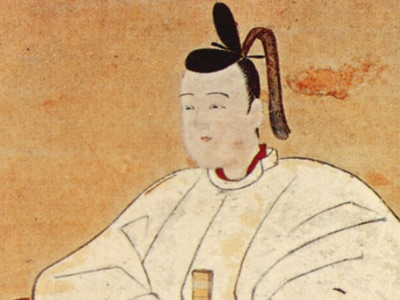
Toyotomi Hideyoshi was a preeminent daimyō, warrior, general, samurai, and politician of the Sengoku period who is regarded as Japan's second "great unifier". He succeeded his former liege lord, Oda Nobunaga, and brought an end to the Warring States period. Hideyoshi is noted for a number of cultural legacies, including the restriction that only members of the samurai class could bear arms. View Historical Figure »
Oda Nobunaga 織田 信長 (1534-1582)
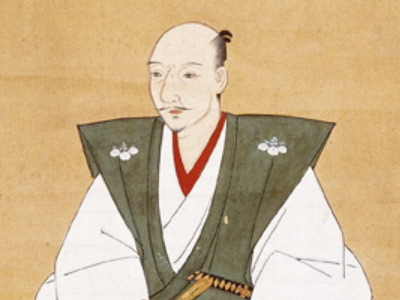
Oda Nobunaga was a powerful Daimyō of Japan in the late 16th century who attempted to unify Japan during the late Sengoku period. During his later life, Nobunaga was widely known for most brutal suppression of determined opponents, eliminating those who by principle refused to cooperate or yield to his demands. View Historical Figure »
Henry II (1519-1559)
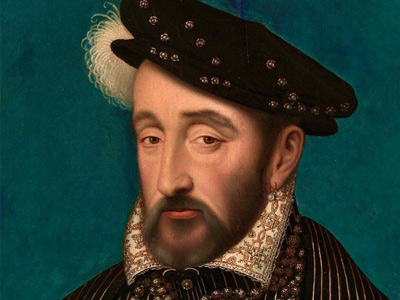
Henry II was King of France from 31 March 1547 until his death in 1559. The second son of Francis I and Duchess Claude of Brittany, he became Dauphin of France upon the death of his elder brother Francis in 1536. Henry pursued his father's policies in matters of art, war, and religion. He persevered in the Italian Wars against the Habsburgs and tried to suppress the Reformation, even as the Huguenot numbers were increasing drastically in France during his reign.
Catherine Parr (1512-1548)
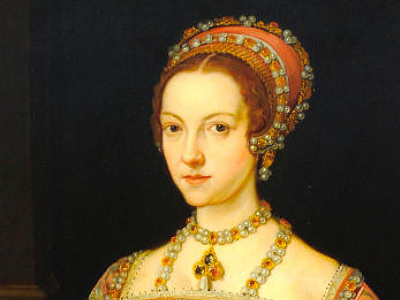
Catherine Parr was Queen of England and Ireland as the last of the six wives of King Henry VIII from their marriage on 12 July 1543 until Henry's death on 28 January 1547. Catherine was the final queen consort of the House of Tudor, and outlived Henry by a year and eight months. With four husbands, she is the most-married English queen. She was the first woman to publish an original work under her own name in English in England.
Nostradamus (1503-1566)
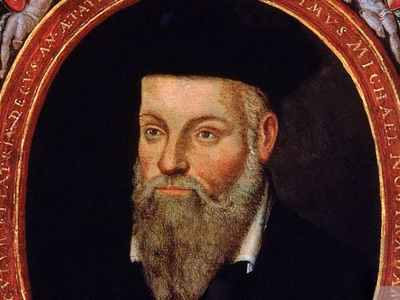
Michel de Nostredame, usually Latinised as Nostradamus, was a French astrologer, apothecary, physician, and reputed seer, who is best known for his book Les Prophéties (published in 1555), a collection of 942 poetic quatrains allegedly predicting future events. Academic sources reject the notion that Nostradamus had any genuine supernatural prophetic abilities and maintain that the associations made between world events and Nostradamus's quatrains are the result of (sometimes deliberate) misinterpretations or mistranslations.
Anne Boleyn (1501-1536)
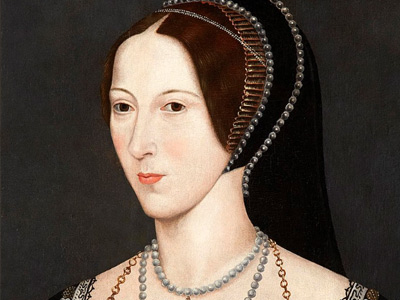
Anne Boleyn was Queen of England from 1533 to 1536, as the second wife of King Henry VIII. The circumstances of her marriage and of her execution by beheading for treason and other charges made her a key figure in the political and religious upheaval that marked the start of the English Reformation. She has been called "the most influential and important queen consort England has ever had", as she provided the occasion for Henry VIII to annul his marriage to Catherine of Aragon and declare the English church's independence from the Vatican.
Charles V (1500-1558)
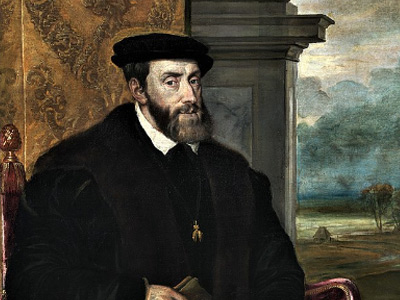
Charles V was Holy Roman Emperor and Archduke of Austria from 1519 to 1556, King of Spain from 1516 to 1556, and Lord of the Netherlands as titular Duke of Burgundy from 1506 to 1555. He oversaw both the continuation of the long-lasting Spanish colonization of the Americas and the short-lived German colonization of the Americas. Charles V revitalized the medieval concept of universal monarchy and spent most of his life attempting to defend the integrity of the Holy Roman Empire from the Protestant Reformation, the expansion of the Ottoman Empire, and a series of wars with France.
Francis I of France (1494-1547)
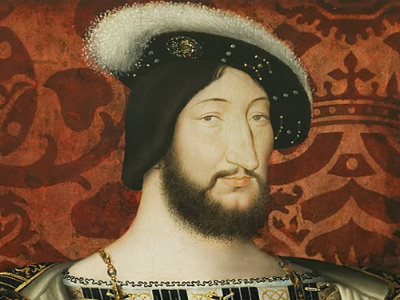
Francis I was King of France from 1515 until his death in 1547. He was the son of Charles, Count of Angoulême, and Louise of Savoy. He succeeded his first cousin once removed and father-in-law Louis XII, who died without a son. A prodigious patron of the arts, he promoted the emergent French Renaissance by attracting many Italian artists to work for him, including Leonardo da Vinci, who brought the Mona Lisa with him, which Francis had acquired.
Henry VIII (1491-1547)
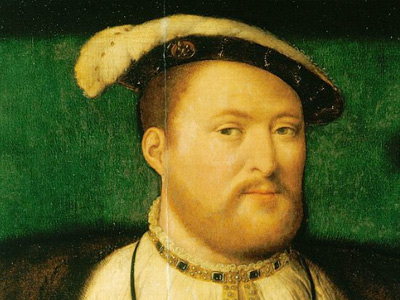
Henry VIII was King of England from 22 April 1509 until his death in 1547. Henry is best known for his six marriages, and for his efforts to have his first marriage (to Catherine of Aragon) annulled. Henry is also known as "the father of the Royal Navy" as he invested heavily in the navy and increased its size from a few to more than 50 ships, and established the Navy Board. He has been described as "one of the most charismatic rulers to sit on the English throne" and his reign has been described as the "most important" in English history.
Albert of Prussia (1490-1568)
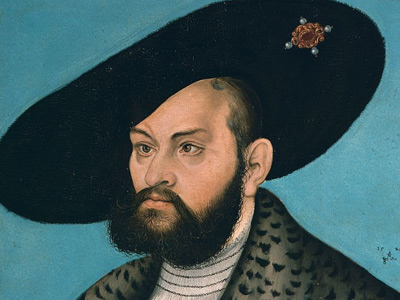
Albert of Prussia was a German prince who was the 37th Grand Master of the Teutonic Knights, who after converting to Lutheranism, became the first ruler of the Duchy of Prussia, the secularized state that emerged from the former Monastic State of the Teutonic Knights. Albert was the first European ruler to establish Lutheranism, and thus Protestantism, as the official state religion of his lands.
Charles III Duke of Bourbon (1490-1527)
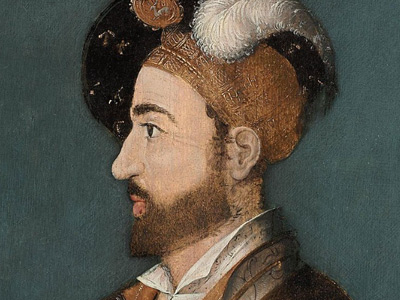
Charles III, Duke of Bourbon was a French military leader. He was also the constable of France from 1515 to 1521. Also known as the Constable of Bourbon, he was the last of the great feudal lords to oppose the king of France. He commanded the troops of Holy Roman Emperor Charles V in what became known as the Sack of Rome in 1527, where he was killed.
Gaston de Foix (1489-1512)
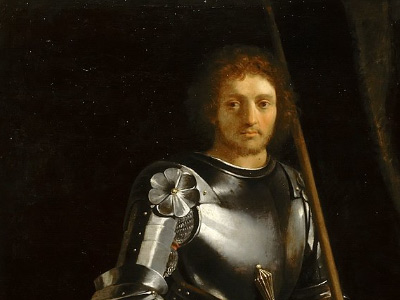
Gaston de Foix, Duke of Nemours, nicknamed The Thunderbolt of Italy, was a famed French military commander of the Renaissance. Nephew of King Louis XII of France and general of his armies in Italy from 1511 to 1512, he is noted for his military feats in a career which lasted no longer than a few months. The young general is regarded as a stellar commander well ahead of his time. An adept of lightning fast forced marches as well as sudden and bold offensives that destabilized contemporary armies and commanders.
Titian (1488-1576)
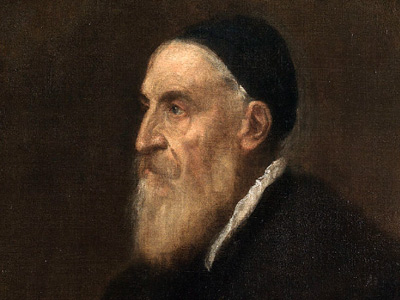
Tiziano Vecelli or Vecellio known in English as Titian, was an Italian (Venetian) painter of the Renaissance, considered the most important member of the 16th-century Venetian school. Titian was one of the most versatile of Italian painters, equally adept with portraits, landscape backgrounds, and mythological and religious subjects. His painting methods, particularly in the application and use of colour, exercised a profound influence not only on painters of the late Italian Renaissance, but on future generations of Western artists.
Juan Sebastián Elcano (1486-1526)
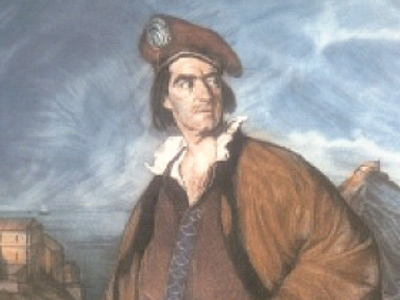
Juan Sebastián Elcano was a Spanish navigator, ship-owner and explorer of Basque origin, best known for having completed the first circumnavigation of the Earth in the ship Victoria on the Magellan expedition to the Spice Islands. He received recognition for his achievement by Charles V of Spain with a coat of arms bearing a globe and the Latin motto Primus circumdedisti me. Following his success, the king entrusted him with another large expedition to the Spice Islands, which was not completed. Elcano died in the Pacific Ocean during this venture.
Ferdinand Magellan (1480-1521)
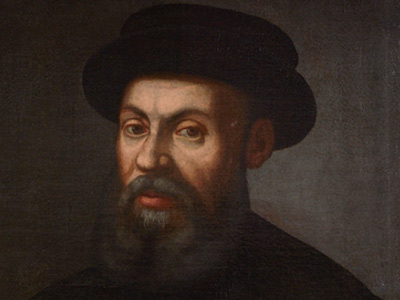
Ferdinand Magellan was a Portuguese explorer and a subject of the Hispanic Monarchy from 1518. He is best known for having planned and led the 1519 Spanish expedition to the East Indies across the Pacific Ocean to open a maritime trade route, during which he discovered the interoceanic passage bearing thereafter his name and achieved the first European navigation from the Atlantic to Asia. Magellan has come to be renowned for his navigational skill and tenacity. The first circumnavigation has been called "the greatest sea voyage in the Age of Discovery".
Michelangelo (1475-1564)
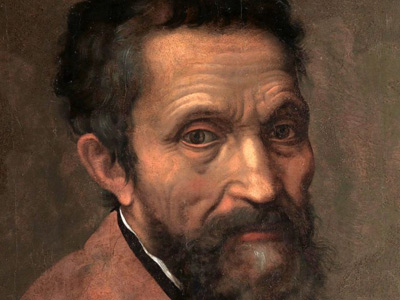
Michelangelo was an Italian sculptor, painter, architect, and poet of the High Renaissance born in the Republic of Florence, who exerted an unparalleled influence on the development of Western art. Despite holding a low opinion of painting, he also created two of the most influential frescoes in the history of Western art: the scenes from Genesis on the ceiling of the Sistine Chapel in Rome, and The Last Judgment on its altar wall. View Historical Figure »
Nicolaus Copernicus (1473-1543)
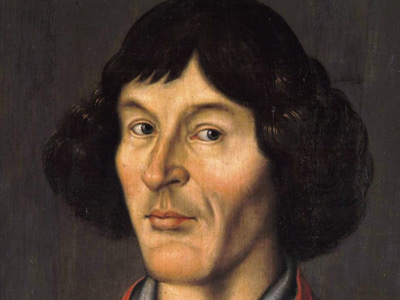
Nicolaus Copernicus was a Renaissance polymath, active as a mathematician, astronomer, and Catholic canon, who formulated a model of the universe that placed the Sun rather than Earth at its center. The publication of Copernicus's model in his book De revolutionibus orbium coelestium (On the Revolutions of the Celestial Spheres), just before his death in 1543, was a major event in the history of science, triggering the Copernican Revolution and making a pioneering contribution to the Scientific Revolution.
Sigismund I the Old (1467-1548)
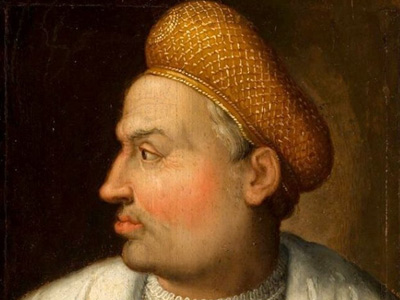
Sigismund I the Old was King of Poland and Grand Duke of Lithuania from 1506 until his death in 1548. Sigismund I was a member of the Jagiellonian dynasty, the son of Casimir IV and younger brother of Kings John I Albert and Alexander I Jagiellon. A capable monarch and a patron of arts, Sigismund established Polish rule over Ducal Prussia and annexed the Duchy of Mazovia with Warsaw, while retaining the nation's wealth and prominence in the region.
Maximilian I (1459-1519)
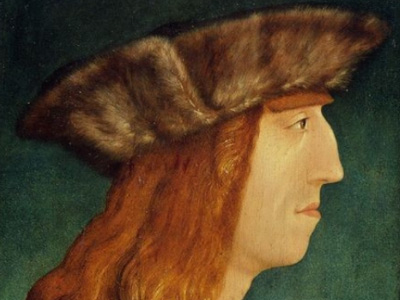
Maximilian I was King of the Romans from 1486 and Holy Roman Emperor from 1508 until his death. He was never crowned by the pope, as the journey to Rome was blocked by the Venetians. He proclaimed himself Elected Emperor in 1508 (Pope Julius II later recognized this) at Trent, thus breaking the long tradition of requiring a Papal coronation for the adoption of the Imperial title. Since his coronation as King of the Romans in 1486, he ran a double government with his father until Frederick's death in 1493.
Leonardo da Vinci (1452-1519)
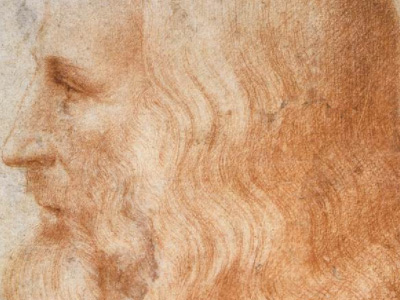
Leonardo da Vinci was an Italian Renaissance polymath whose areas of interest included invention, painting, sculpting, architecture, science, music, mathematics, engineering, literature, anatomy, geology, astronomy, botany, writing, history, and cartography. Sometimes credited with the inventions of the parachute, helicopter and tank, he epitomised the Renaissance humanist ideal. View Historical Figure »
Christopher Columbus (1451-1506)
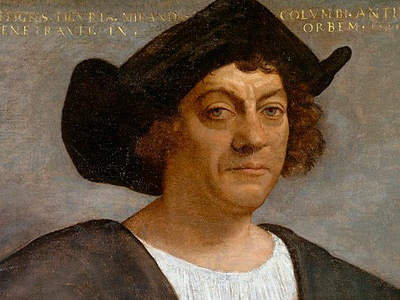
An Italian explorer, navigator, and colonizer. Under the auspices of the Catholic Monarchs of Spain he completed four voyages across the Atlantic Ocean. Those voyages and his efforts to establish settlements on the island of Hispaniola initiated the permanent European colonization of the New World. View Historical Figure »
Mehmed II (1432-1481)
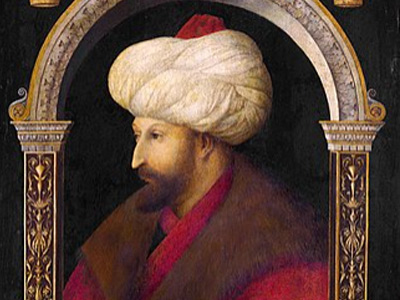
Mehmed II was an Ottoman sultan who ruled from August 1444 to September 1446, and then later from February 1451 to May 1481. In Mehmed II's first reign, he defeated the crusade led by John Hunyadi after the Hungarian incursions into his country broke the conditions of the truce Peace of Szeged. When Mehmed II ascended the throne again in 1451, he strengthened the Ottoman navy and made preparations to attack Constantinople.
Casimir IV (1427-1492)
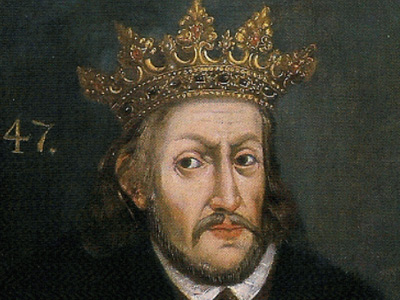
Casimir IV was Grand Duke of Lithuania from 1440 and King of Poland from 1447, until his death. He was one of the most active Polish-Lithuanian rulers, under whom Poland, by defeating the Teutonic Knights in the Thirteen Years' War recovered Pomerania, and the Jagiellonian dynasty became one of the leading royal houses in Europe. The great triumph of his reign was bringing Prussia under Polish rule.
Joan of Arc (1412-1431)
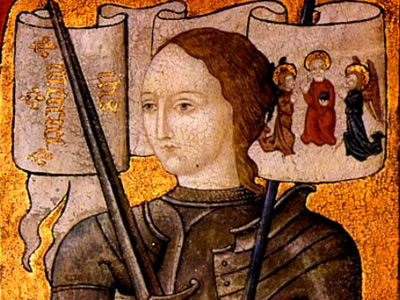
Joan of Arc is considered a heroine of France for her role during the Lancastrian phase of the Hundred Years' War and was canonized as a Roman Catholic saint. She gained prominence after the siege was lifted only nine days later. Several additional swift victories led to Charles VII's coronation at Reims. This long-awaited event boosted French morale and paved the way for the final French victory. View Historical Figure »
Sejong the Great 세종대왕 (1397-1450)
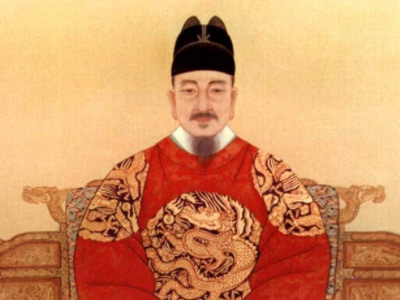
Sejong the Great was the fourth king of Joseon-dynasty Korea. He created the Korean alphabet Hangul, encouraged advancements of scientific technology, and instituted many other efforts to stabilize and improve prosperity. King Sejong was an effective military planner. He created various military regulations to strengthen the safety of his kingdom, supported the advancement of Korean military technology, including cannon development. View Historical Figure »
Philip III (1396-1467)
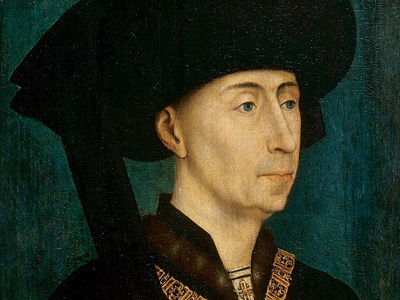
Philip III was Duke of Burgundy from 1419 until his death. During his reign, the Burgundian State reached the apex of its prosperity and prestige, and became a leading centre of the arts. Philip is known historically for his administrative reforms, his patronage of Flemish artists such as van Eyck and Franco-Flemish composers such as Gilles Binchois, and perhaps most significantly the seizure of Joan of Arc, whom Philip ransomed to the English after his soldiers captured her, resulting in her trial and eventual execution.
John of Gaunt (1340-1399)
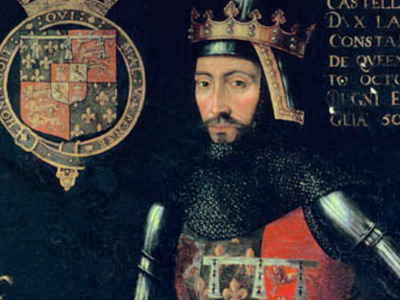
John of Gaunt, Duke of Lancaster was an English royal prince, military leader, and statesman. He was the fourth son (third to survive infancy as William of Hatfield died shortly after birth) of King Edward III of England, and the father of King Henry IV. Due to Gaunt's royal origin, advantageous marriages, and some generous land grants, he was one of the richest men of his era, and was an influential figure during the reigns of both his father and his nephew, Richard II.
Taejo of Joseon 태조 (1335-1408)
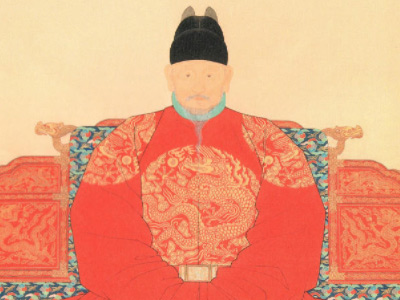
Founder and the first king of the Joseon Dynasty of Korea reigning from 1392 to 1398, and the main figure in overthrowing the Goryeo Dynasty. He declared a new dynasty in 1392–1393 under the name of Joseon, thereby reviving an older state, also known as Joseon, that was, legendarily, established nearly three thousand years previously, and renamed the country the Kingdom of Great Joseon. View Historical Figure »
Peter IV (1319-1387)
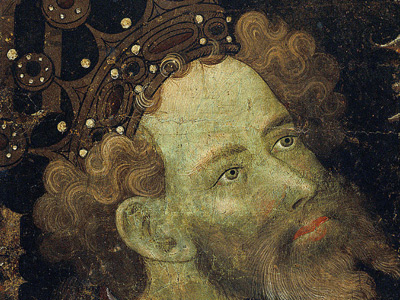
Peter IV was from 1336 until his death the king of Aragon, Sardinia-Corsica, and Valencia, and count of Barcelona. In 1344, he deposed James III of Majorca and made himself King of Majorca. His reign was occupied with attempts to strengthen the crown against the Union of Aragon and other such devices of the nobility, with their near constant revolts, and with foreign wars, in Sardinia, Sicily, the Mezzogiorno, Greece, and the Balearics. His wars in Greece made him Duke of Athens and Neopatria in 1381.
Henry VII (1273-1313)
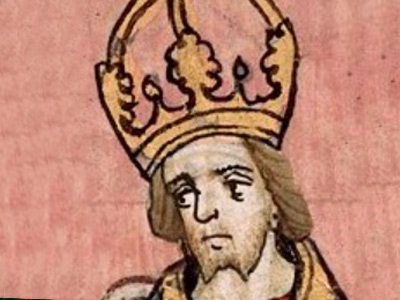
Henry VII also known as Henry of Luxembourg, was Count of Luxembourg, King of Germany from 1308 and Holy Roman Emperor from 1312. During his brief career he reinvigorated the imperial cause in Italy, which was racked with the partisan struggles between the divided Guelf and Ghibelline factions. He was the first emperor since the death of Frederick II in 1250, ending the Great Interregnum of the Holy Roman Empire; however, his premature death threatened to undo his life's work.
Marco Polo (1254-1324)
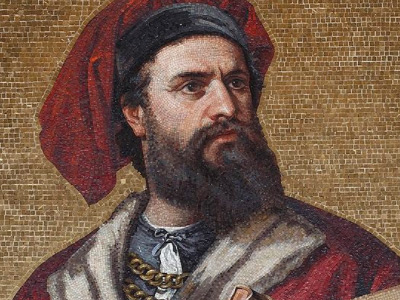
Marco Polo was a Venetian merchant, explorer, and writer. His travels are recorded in Livres des merveilles du monde (Book of the Marvels of the World), a book that described to Europeans the wealth and great size of China, its capital Peking, and other Asian cities and countries. Marco Polo was not the first European to reach China, but he was the first to leave a detailed chronicle of his experience. View Historical Figure »
Louis IX (1214-1270)
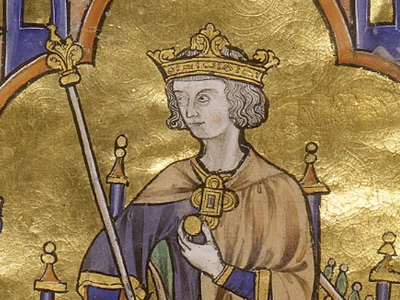
Louis IX, commonly known as Saint Louis or Louis the Saint, was King of France from 1226 to 1270, and the most illustrious of the Direct Capetians. He was crowned in Reims at the age of 12, following the death of his father Louis VIII. His admirers through the centuries have regarded Louis IX as the ideal Christian ruler. His skill as a knight and engaging manner with the public made him popular.
Genghis Khan (1162-1227)
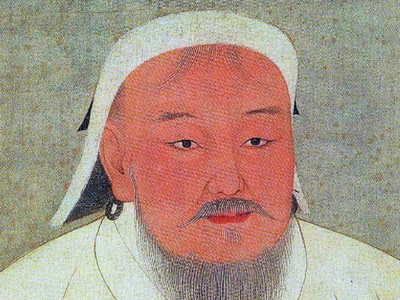
Genghis Khan was the Great Khan and founder of the Mongol Empire, which became the largest contiguous empire in history after his death. He came to power by uniting many of the nomadic tribes of Northeast Asia. By the end of his life, the Mongol Empire occupied a substantial portion of Central Asia and China. View Historical Figure »
Richard I of England (1157-1199)
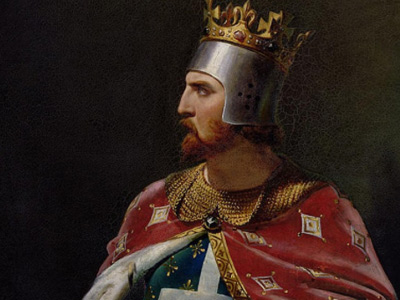
Richard I of England was King of England from 6 July 1189 until his death. He was known as Richard Cœur de Lion or Richard the Lionheart because of his reputation as a great military leader and warrior. He remains one of the few kings of England remembered by his epithet, rather than regnal number, and is an enduring iconic figure both in England and in France. View Historical Figure »
Afonso I of Portugal (1106-1185)
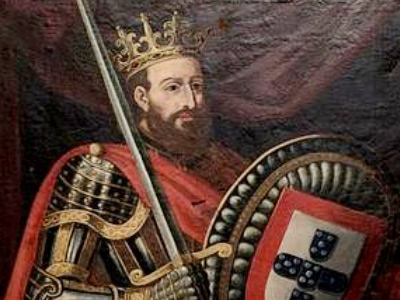
Also called Afonso Henriques, nicknamed the Conqueror by the Portuguese, was the first king of Portugal. He achieved the independence of the County of Portugal, establishing a new kingdom and doubling its area with the Reconquista, an objective that he pursued until his death. In 1139 he won a decisive victory at the Battle of Ourique, and in 1147 he conquered Santarém and Lisbon from the Moors, with help from men on their way to the Holy Land for the Second Crusade.
William the Conqueror (1028-1087)
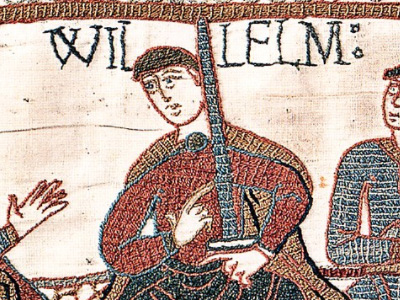
The first Norman King of England, reigning from 1066 until his death in 1087. After a long struggle to establish his power, by 1060 his hold on Normandy was secure, and he launched the Norman conquest of England six years later. The rest of his life was marked by struggles to consolidate his hold over England and his continental lands and by difficulties with his eldest son. View Historical Figure »
Otto II, Holy Roman Emperor (955-983 AD)
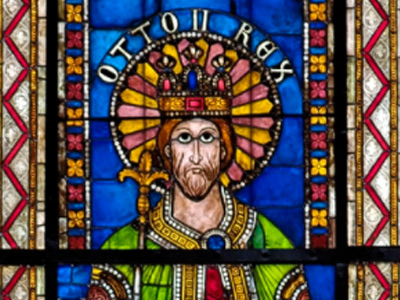
Otto II, Holy Roman Emperor called the Red (Rufus), was Holy Roman Emperor from 973 until his death in 983. A member of the Ottonian dynasty, Otto II was the youngest and sole surviving son of Otto the Great and Adelaide of Italy. Otto II spent his reign continuing his father's policy of strengthening Imperial rule in Germany and extending the borders of the Empire deeper into southern Italy. Otto II also continued the work of Otto I in subordinating the Catholic Church to Imperial control. View Historical Figure »
Mieszko I (930-992 AD)
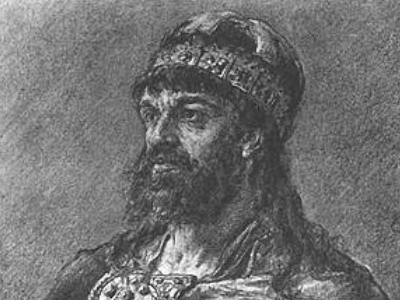
Mieszko I was the first ruler of Poland and the founder of the first independent Polish state, the Duchy of Poland. Apart from the great conquests accomplished during his reign, which proved to be fundamental for the future of Poland, Mieszko I was renowned for his internal reforms, which were aimed at expanding and improving the so-called war monarchy system. In foreign policy, he placed the interests of his country foremost, even entering into agreements with his former enemies.
Alfonso III of Asturias (848-910 AD)
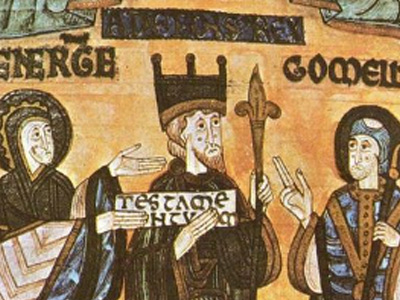
Alfonso III, called the Great, was the king of León, Galicia and Asturias from 866 until his death. He was the son and successor of Ordoño I. In later sources he is the earliest to be called "Emperor of Spain." Alfonso's reign was notable for his comparative success in consolidating the kingdom during the weakness of the Umayyad princes of Córdoba. He fought against and gained numerous victories over the Muslims of al-Andalus.
Rollo (846-930 AD)
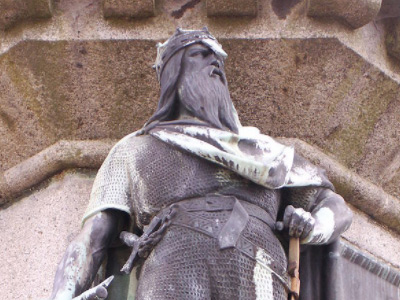
Rollo was a Viking who became the first ruler of Normandy. His Scandinavian name Rolf was extended to Gaange Rolf because he as an adult became too heavy for a horse to carry, therefore he had to walk. Rollo is first recorded as the leader of these Viking settlers in a charter of 918, and he continued to reign over the region of Normandy until at least 928. View Historical Figure »
Lothair II (835-869 AD)
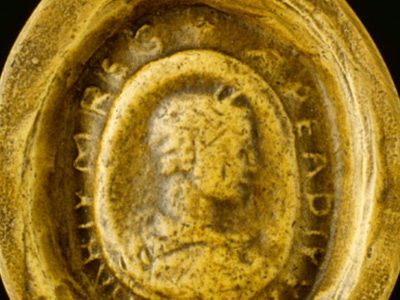
Lothair II was the king of Lotharingia from 855 until his death. He was the second son of Emperor Lothair I and Ermengarde of Tours. Lotharingia was a short-lived medieval successor kingdom of the Carolingian Empire. It was named after King Lothair II, who received this territory after his father Lothair I's kingdom of Middle Francia was divided among his three sons in 855.
Charles the Bald (823-877 AD)
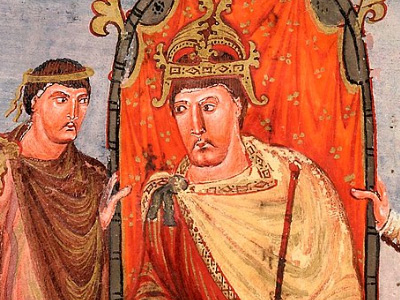
Charles the Bald also known as Charles II, was a 9th-century king of West Francia (843–877), king of Italy (875–877) and emperor of the Carolingian Empire (875–877). After a series of civil wars during the reign of his father, Louis the Pious, Charles succeeded, by the Treaty of Verdun (843), in acquiring the western third of the empire. He was a grandson of Charlemagne and the youngest son of Louis the Pious by his second wife, Judith.
Lothair I (795-855 AD)
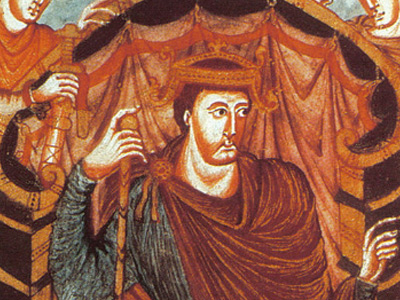
Lothair I or Lothar I was emperor (817–855, co-ruling with his father until 840), and the governor of Bavaria (815–817), King of Italy (818–855) and Middle Francia (840–855). Upon the father's death, Charles and Louis joined forces against Lothair in a three-year civil war (840–843). The struggles between the brothers led directly to the breakup of the Frankish Empire assembled by their grandfather Charlemagne, and laid the foundation for the development of modern France and Germany.
Cleopatra (69-30 BC)
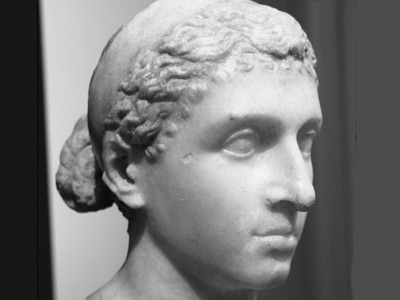
Cleopatra VII Philopator was Queen of the Ptolemaic Kingdom of Egypt from 51 to 30 BC, and its last active ruler. A member of the Ptolemaic dynasty, she was a descendant of its founder Ptolemy I Soter, a Macedonian Greek general and companion of Alexander the Great.
Julius Caesar (100-44 BC)
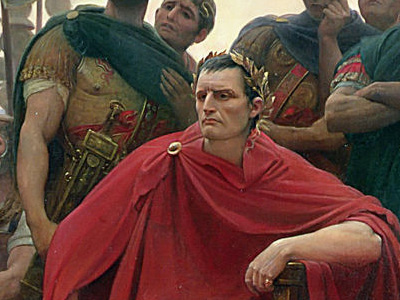
Julius Caesar was a Roman politician and general who played a critical role in the events that led to the demise of the Roman Republic and the rise of the Roman Empire. He is also known as a notable author of Latin prose. View Historical Figure »
Hannibal Barca (247-183 BC)
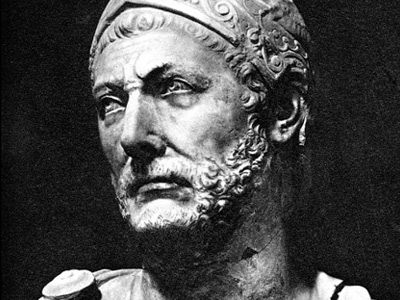
Hannibal Barca was a Carthaginian general, considered one of the greatest military commanders in history. His father Hamilcar Barca was the leading Carthaginian commander during the First Punic War. His younger brothers were Mago and Hasdrubal, and he was brother-in-law to Hasdrubal the Fair. View Historical Figure »
Pyrrhus of Epirus (318-272 BC)
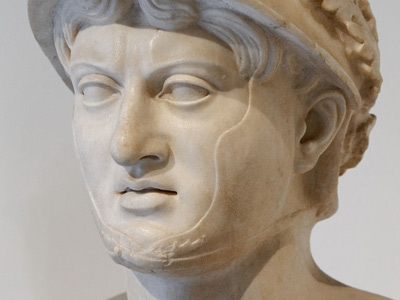
Pyrrhus of Epirus was a Greek general and statesman of the Hellenistic period. He was king of the Greek tribe of Molossians, of the royal Aeacid house (from c. 297 BC), and later he became king of Epirus (r. 306–302, 297–272 BC). He was one of the strongest opponents of early Rome. Some of his battles, though successful, caused him heavy losses, from which the term Pyrrhic victory was coined. View Historical Figure »
Alexander the Great (356-323 BC)
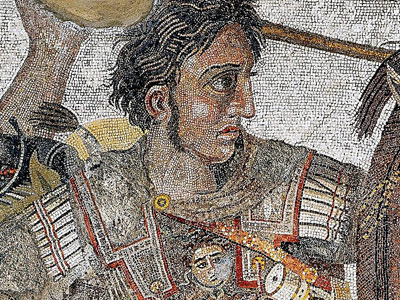
Alexander III of Macedon, was a king of the Ancient Greek kingdom of Macedon[a] and a member of the Argead dynasty. He was undefeated in battle and is widely considered one of history's most successful military commanders. View Historical Figure »
Ramesses the Great (1303-1213 BC)
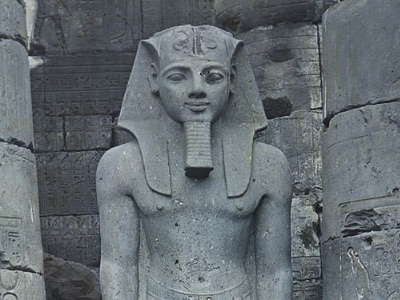
Ramesses II, also known as Ramesses the Great, was the third pharaoh of the Nineteenth Dynasty of Egypt. He is often regarded as the greatest, most celebrated, and most powerful pharaoh of the New Kingdom. His successors and later Egyptians called him the "Great Ancestor". View Historical Figure »
King Tut (1341-1323 BC)
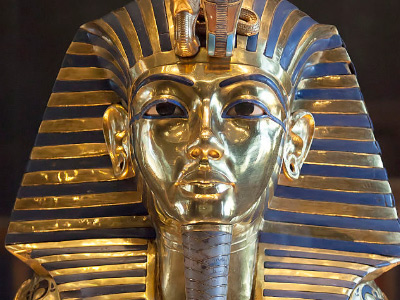
Tutankhamun was an Egyptian pharaoh of the 18th dynasty (ruled c. 1332–1323 BC in the conventional chronology), during the period of Egyptian history known as the New Kingdom or sometimes the New Empire Period. He has, since the discovery of his intact tomb, been referred to colloquially as King Tut. For many years, rumors of a "curse of the pharaohs" (probably fueled by newspapers seeking sales at the time of the discovery) persisted, emphasizing the early death of some of those who had entered the tomb. View Historical Figure »

RESOURCES
This article uses material from the Wikipedia articles "Short story", "Elon Musk (1971-)", "Henry Ford (1863-1947)", "Elvis Presley", "Albert Einstein", "Magic (illusion)", "Napoleon", "Napoleon III (1808-1873)", "Alexander the Great", "Yi Sun-Shin", "Miyamoto Musashi", "Akihito (1933-)", "Julius Caesar", "Hannibal Barca (247-183 BC)", "Pyrrhus of Epirus (318-272 BC)", "Ramesses the Great (1303-1213 BC)", "King Tut (1341-1323 BC)", "Abraham Lincoln", "Thomas Edison (1847-1931)", "Ronald Reagan (1911-2004)", "Franklin Delano Roosevelt (1882-1945)", "John Fitzgerald Kennedy (1917-1963)", "Richard Nixon (1913-1994)", "Barack Obama", "Martin Luther King Jr", "George W Bush", "Fidel Castro", "Che Guevara", "Bill Gates", "Volodymyr Zelenskyy", "Cleopatra", "Philip V of Spain", "Louis XIV", "Louis XIII", "Henry IV of France", "Henry III of France", "Henry II of France", "Francis I of France", "Henry VIII",
"Anne Boleyn", "Catherine Parr", "Louis Antoine", "Louis Philippe I", "Napoleon II", "Eugène de Beauharnais", "Joachim Murat", "Louis Bonaparte", "Joseph Bonaparte", "Alexander I of Russia", "Nicholas I of Russia", "Nicholas II of Russia", "Marie Antoinette", "Joseph II Holy Roman Emperor", "Catherine the Great", "Francis II Holy Roman Emperor", "Sir Thomas Hardy 1st Baronet", "Chiang Kai-shek", "Shinzo Abe", "William Thomson 1st Baron Kelvin", "Charles Darwin", "Richard Goodwin Keats", "Casimir IV Jagiellon", "Mieszko I", "Jozef Poniatowski", "Albert Duke of Prussia", "Sigismund I the Old", "Augustus II", "James Cook", "Mikhail Gorbachev", "Steven Spielberg", "Steve Jobs", "Alfonso III of Asturias", "Afonso I of Portugal", "Charles III Duke of Bourbon",
"Pablo Picasso", "Alessandro Volta", "Lord Hugh Seymour", "Anders Celsius", "James Watt", "Blaise Pascal", "James Prescott Joule", "John Napier", "Evangelista Torricelli", "Carl Friedrich Gauss", "John Dalton", "Thomas Jefferson", "James Madison", "James Monroe", "William Henry Harrison", "John Adams", "Dwight D Eisenhower", "Ernst Mach", "Alexander Graham Bell", "Juan Sebastian Elcano", "Ferdinand Magellan", "Charles V Holy Roman Emperor", "Maximilian I Holy Roman Emperor", "Howard Carter", "Peter IV of Aragon", "Titian", "John of Gaunt", "Rudolf II Holy Roman Emperor", "Nostradamus", "Charles de Gaulle", "Lothair I", "Lothair II", "Charles the Bald", "Henry VII Holy Roman Emperor", "Nicolaus Copernicus", "Paul von Hindenburg", "Charles III of Spain", "Ferdinand VII of Spain", "Woodrow Wilson",
"Theodore Roosevelt", "William McKinley", "Frederick William", "Gaston of Foix", "Rembrandt",
"Nikola Tesla (1856-1943)", "Gottlieb Daimler (1834-1900)", "Bruce Lee (1940-1973)", "Joan of Arc (1412-1431)", "Louis XV of France (1710-1774)", "Richard I of England (1157-1199)", "William the Conqueror (1028-1087)", "Rollo (846-930 AD)", "Otto II, Holy Roman Emperor (955-983)", "Frederick the Great (1712-1786)", "William Shakespeare (1564-1616)", "Michelangelo (1475-1564)", "Leonardo da Vinci (1452-1519)", "Vincent van Gogh (1853-1890)", "George Washington (1732-1799)", "Samuel Morse (1791-1872)", "Benjamin Franklin (1706-1790)", "Winston Churchill (1874-1965)", "Adolf Hitler (1889-1945)", "Johann Sebastian Bach (1685-1750)", "Ludwig van Beethoven (1770-1827)", "Wolfgang Amadeus Mozart (1756-1791)", "Isaac Newton (1642-1726)", "Galileo Galilei (1564-1642)", "Christopher Columbus (1451-1506)", "Jeffery Amherst (1717-1797)", "Marco Polo (1254-1324)", "Sejong the Great (1397-1450)", "Taejo of Joseon (1335-1408)", "Gojong of Korea (1852-1919)", "Oda Nobunaga (1534-1582)", "Toyotomi Hideyoshi (1537-1598)", "Tokugawa Ieyasu (1543-1616)", "Hattori Hanzō (1542-1596)", "James Wolfe (1727-1759)", "Mohandas Karamchand Gandhi (1869-1948)", "Genghis Khan (1162-1227)", "Joseph Stalin (1878-1953)", which is released under the Creative Commons Attribution-Share-Alike License 3.0.
© Stories Preschool. All Rights Reserved.
"Building Cool Educational Stuff for children and adults!"


Historic Battles
Wars and military campaigns are guided by strategy, whereas battles take place on a level of planning and execution known as operational mobility.
View Historic Battles »


Historic People
A historical figure is a famous person in history, such as Alexander the Great, Admiral Yi Sun-Shin, Abraham Lincoln, George Washington, Christopher Columbus, or Napoleon Bonaparte.
View Historic People »


Historic Timeline
Describes the history of humanity as determined by the study of archaeological and written records. Ancient recorded history begins with the invention of writing.
View Historic Timeline »

Historic Legends
Beings in myths are generally gods and goddesses, heroes and heroines, or animals and plants. Most myths are set in a timeless past before recorded time or beginning of the critical history.
View Historic Legends »

Sports World
Includes competitive games which, through casual or organized participation, aim to use, maintain or improve physical ability and skills while providing enjoyment to participants.
View Sports World »

Untold Stories
If you have any questions, feedback or suggestions for us, we'd like to hear from you. Please feel free to contact us!
Contact Us

Historic Battles
Wars and military campaigns are guided by strategy, whereas battles take place on a level of planning and execution known as operational mobility.
View Historic Battles »

Historic People
A historical figure is a famous person in history, such as Alexander the Great, Admiral Yi Sun-Shin, Abraham Lincoln, George Washington, Christopher Columbus, or Napoleon Bonaparte.
View Historic People »

Historic Timeline
Describes the history of humanity as determined by the study of archaeological and written records. Ancient recorded history begins with the invention of writing.
View Historic Timeline »

Historic Legends
Beings in myths are generally gods and goddesses, heroes and heroines, or animals and plants. Most myths are set in a timeless past before recorded time or beginning of the critical history.
View Historic Legends »

Sports World
Includes competitive games which, through casual or organized participation, aim to use, maintain or improve physical ability and skills while providing enjoyment to participants.
View Sports World »

Untold Stories
If you have any questions, feedback or suggestions for us, we'd like to hear from you. Please feel free to contact us!
Contact Us
Historic Battles
Wars and military campaigns are guided by strategy, whereas battles take place on a level of planning and execution known as operational mobility.
View Historic Battles »

Historic People
A historical figure is a famous person in history, such as Alexander the Great, Admiral Yi Sun-Shin, Abraham Lincoln, George Washington, Christopher Columbus, or Napoleon Bonaparte.
View Historic People »

Historic Timeline
Describes the history of humanity as determined by the study of archaeological and written records. Ancient recorded history begins with the invention of writing.
View Historic Timeline »

Historic Legends
Beings in myths are generally gods and goddesses, heroes and heroines, or animals and plants. Most myths are set in a timeless past before recorded time or beginning of the critical history.
View Historic Legends »

Sports World
Includes competitive games which, through casual or organized participation, aim to use, maintain or improve physical ability and skills while providing enjoyment to participants.
View Sports World »

Untold Stories
If you have any questions, feedback or suggestions for us, we'd like to hear from you. Please feel free to contact us!
Contact Us